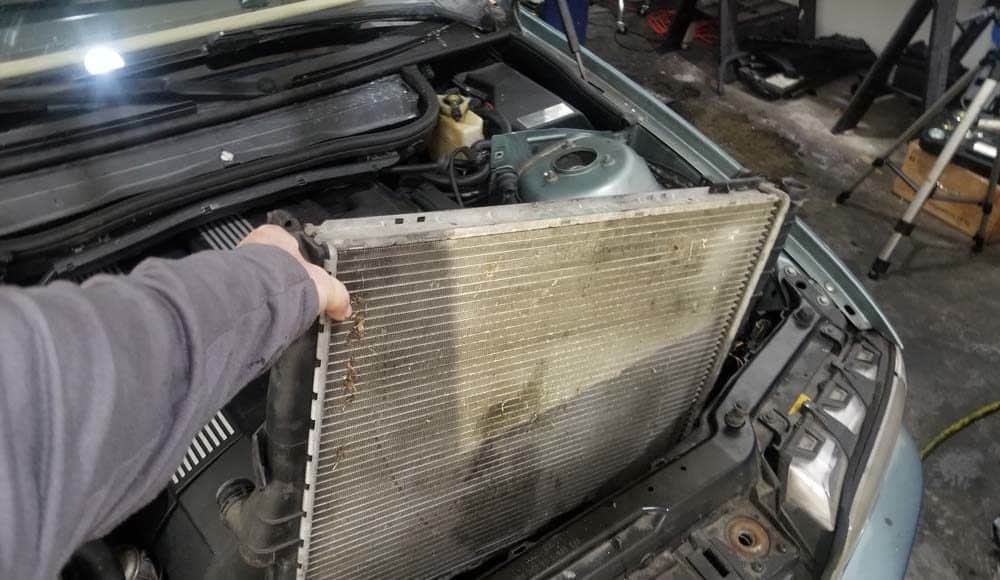Affiliate link disclosure – The BMW Repair Guide uses affiliate links in their site. For more information on affiliate links, please click here.
Repair Summary
The following article provides detailed instructions on replacing the radiator in a BMW E46 3 series car. Even though we have used a 2003 BMW 325ci to perform this installation, this article can be applied to any E46 3 series vehicle, including the 323i, 328i and 330i coupe, sedan and convertible.
See all vehicles this article applies to
E46 3 Series 325ti
E46 3 Series 318td
E46 3 Series 320td
E46 3 Series 318ti
E46 3 Series 330xi
E46 3 Series 330i
E46 3 Series 330xd
E46 3 Series 330d
E46 3 Series 316ti
E46 3 Series 328i
E46 3 Series 325xi
E46 3 Series 325i
E46 3 Series 320i
E46 3 Series 323i
E46 3 Series 320d
E46 3 Series 318i
E46 3 Series 318d
E46 3 Series 316i
E46 3 Series M3 CSL
E46 3 Series M3
E46 3 Series 330Ci
E46 3 Series 330Cd
E46 3 Series 325Ci
E46 3 Series 323Ci
E46 3 Series 320Ci
E46 3 Series 320Cd
E46 3 Series 318Ci
E46 3 Series 328Ci
E46 3 Series 316Ci
E46 3 Series 323i 2.4
E46 3 Series 316i 1.9
E46 3 Series 316i 1.6
The BMW E46 radiator is a common source of engine coolant leaks, especially in its side plastic tanks.
As the old Benjamin Franklin saying goes, "...in this world, nothing is certain except death and taxes". If you are a BMW E46 owner, you would probably agree with one more certainty that could be added to that proverb; a leaking radiator. It's not a matter of "if" your BMW E46 radiator is going to leak...it is a matter of "when". And hopefully, that "when" is safely in your garage and not on a long road trip far from home.
The BMW E46 radiator is a simple heat exchanger; hot engine coolant flows into the aluminum core of the radiator and is cooled by outside air being blown across it. This transfer of heat is accomplished by cooling fins that are attached to an internal network of tubing.
Like the rest of the parts that comprise the vehicle's engine cooling system, the radiator is under constant strain from heat and pressure. The BMW E46 radiator is actually constructed of two plastic coolant tanks joined to an aluminum core. As the plastic ages, it can form stress cracks, especially around the coolant hose fittings. The connections between aluminum and plastic are also common sources of coolant leakage.
An older BMW E46 radiator can also start to deteriorate from within. Corrosion, dirt and debris can build up inside the internal tubing lessening the radiator's ability to cool the engine. Deposits from high mineral content water can impede fluid circulation inside the core, causing devastating damage to the radiator. Internal mineral deposits in your radiator can be avoided by only using distilled water when mixing your engine coolant.
Replacing the radiator in a BMW E46 3 series is a straightforward procedure for the average home mechanic. It is very important to only use Genuine BMW Antifreeze/Coolant mixed 50/50 with distilled water when refilling your system at the end of this repair.


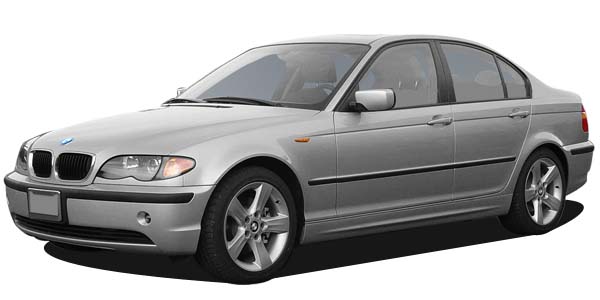
View the detailed parts diagram for this repair.
Includes detailed part diagrams, part numbers and links to purchase all of the required components needed to complete this repair.
Section 1 - Draining the Radiator and Removing the Lower Radiator Hoses
Removing the old radiator from your BMW E46 is a straightforward procedure. Unfortunately, the most difficult part of the repair is removing the coolant hoses, especially the lower ones which must be done from under the car. The hoses fit tight on their fittings and often must be pried off. Age and heat complicate things since the internal hose o-rings will get stuck on the plastic radiator fittings. If you are not planning on replacing your coolant hoses during this repair, care should be taken during the removal process so as not to damage them.- Jack and support the front of the car. Not sure how to jack and support your E46? See our article BMW Jacking and Supporting for Repairs and Maintenance.
- If the belly pan (aka – skid plate or lower engine cover) is still installed on your vehicle, remove it using an 8mm nut driver. Belly pans tend to disappear on older BMWs – they take a lot of abuse and are one of those parts that owners just don’t spend money on replacing. The belly pan needs to be removed in order to access the bottom of the radiator.
- Remove the cap from the coolant expansion tank. This will allow the system to drain thoroughly.
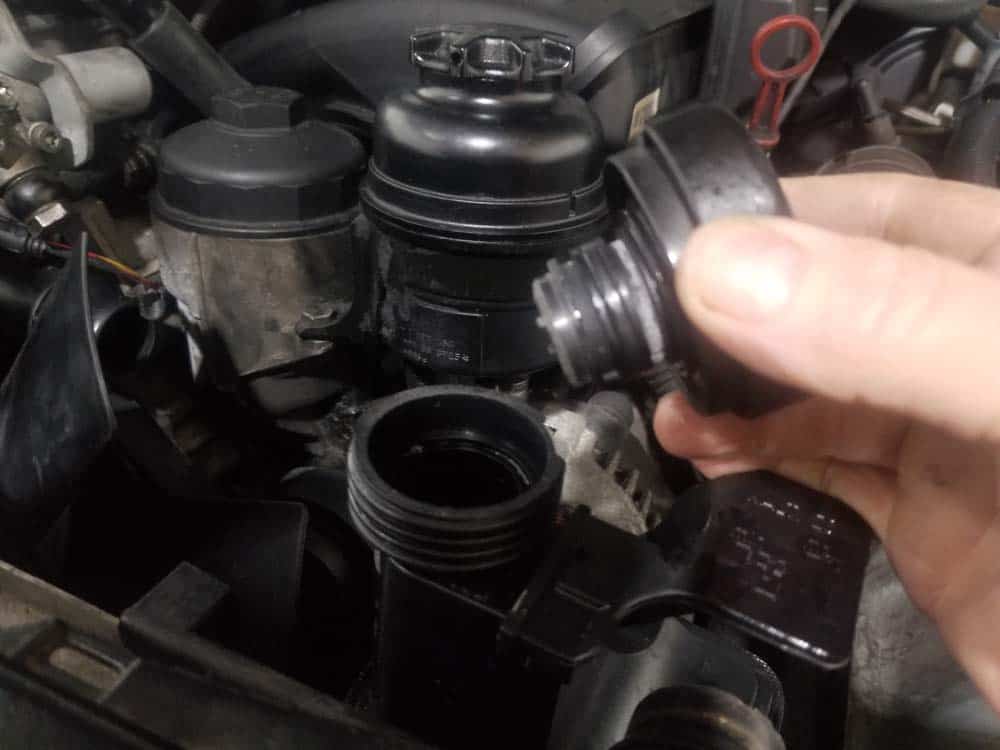
- Locate the radiator under the front of the vehicle. The drain plug is located on the left side of the radiator.
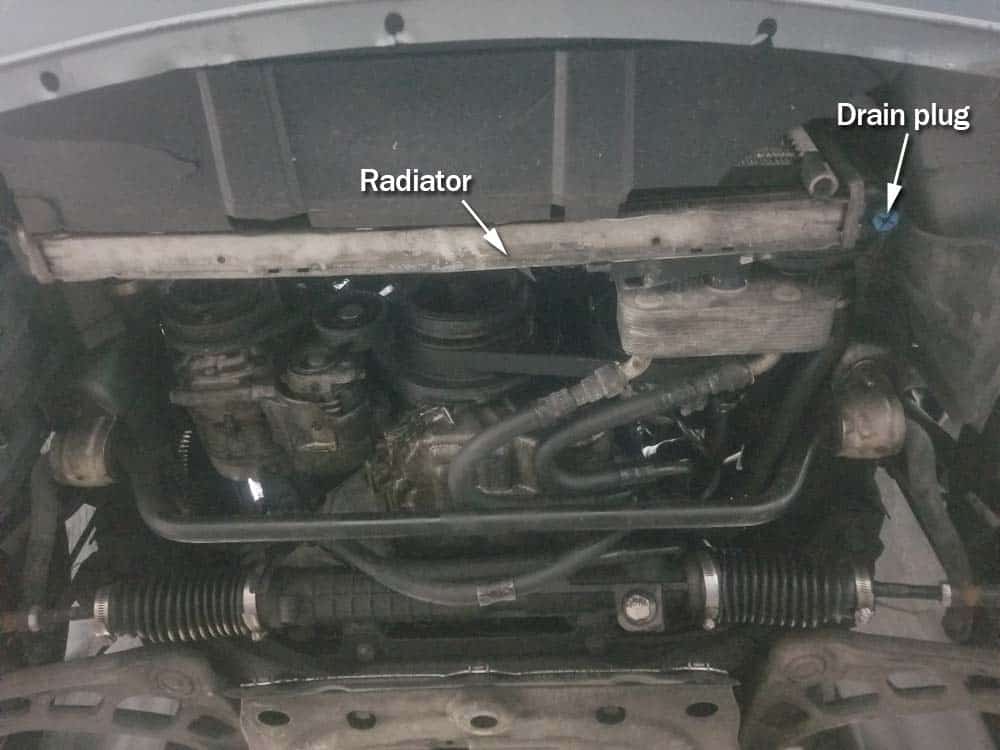
- Position a 5 gallon drain pan under the drain plug.
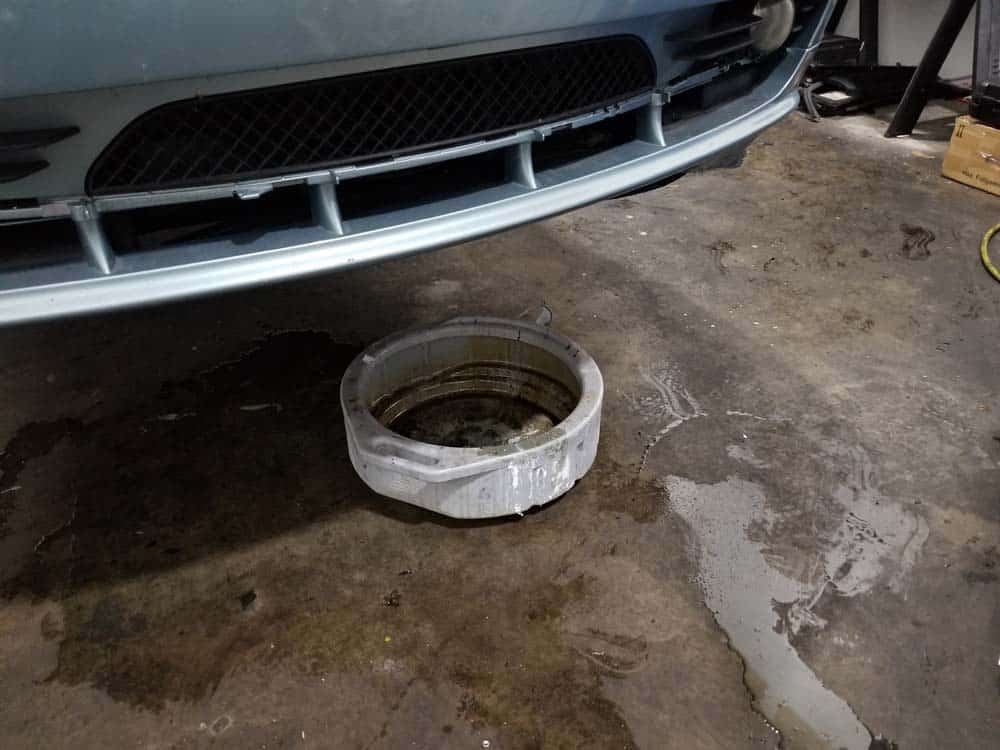
- Using a large flat blade screwdriver, remove the radiator drain plug. Allow the coolant to completely drain from the radiator. When it is finished, replace the drain plug to keep coolant from spilling on the ground while removing the radiator from the car.
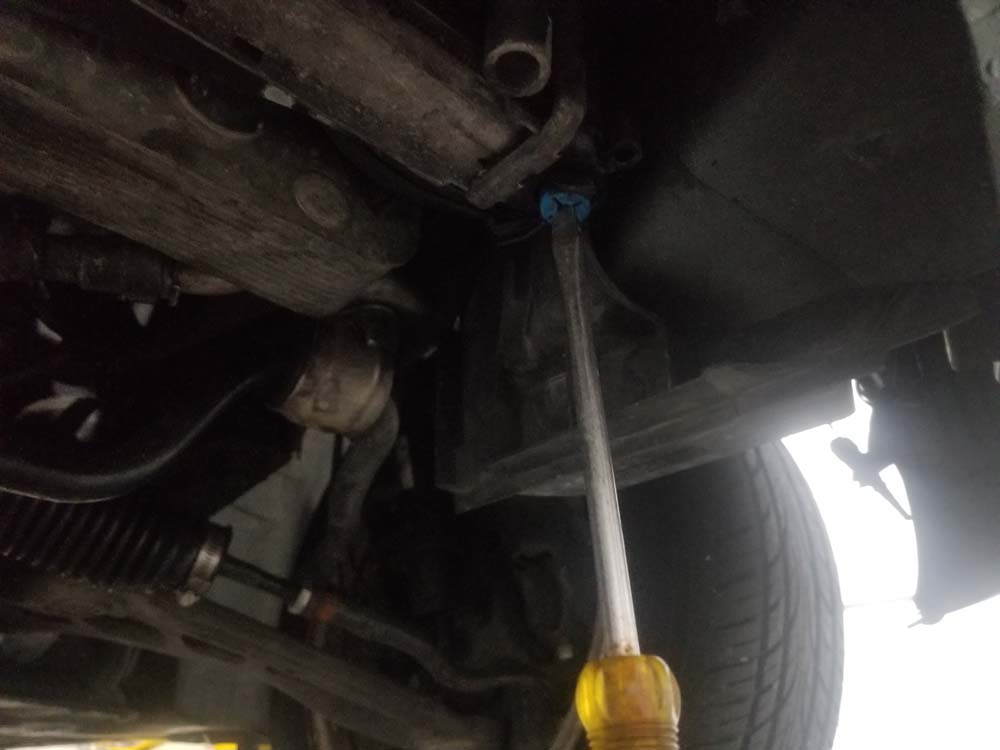
- Moving to the right side of the radiator, use a metal pick or flat blade screwdriver to release the metal clamp that locks the lower right radiator coolant hose to its fitting.
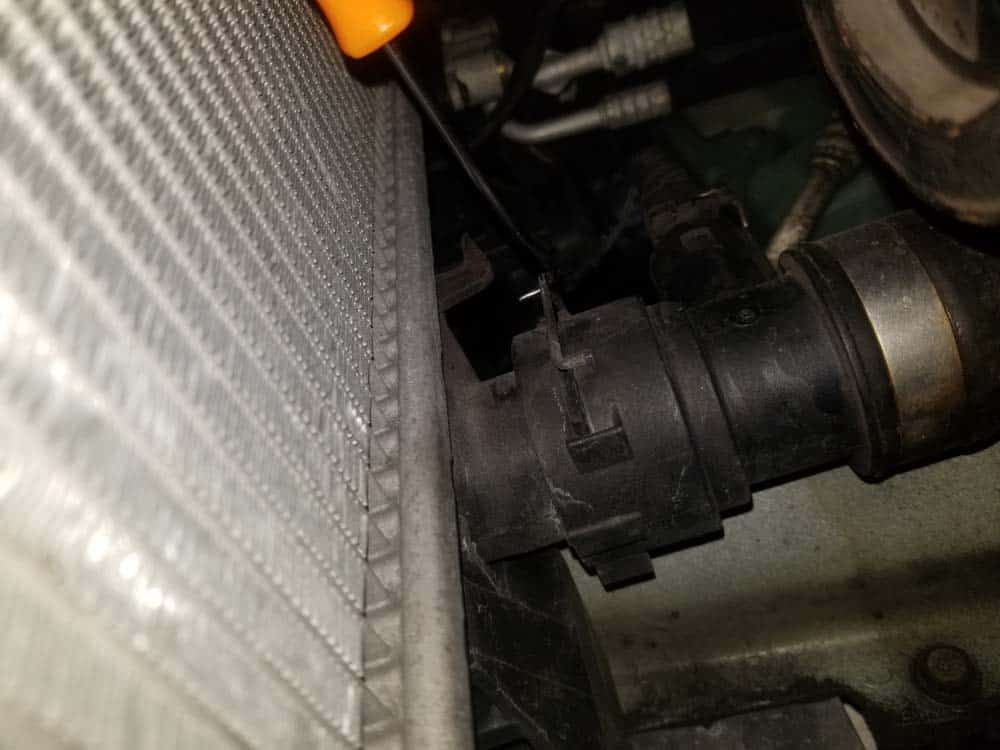
- Position the 5 gallon pan under the hose. Grasp the hose and pull it loose from the radiator. This hose can often be very stubborn. Try rocking it back and forth while pulling on it until it releases from the fitting. If this doesn't work, try using a large flat blade screwdriver to gently pry it off of the radiator.
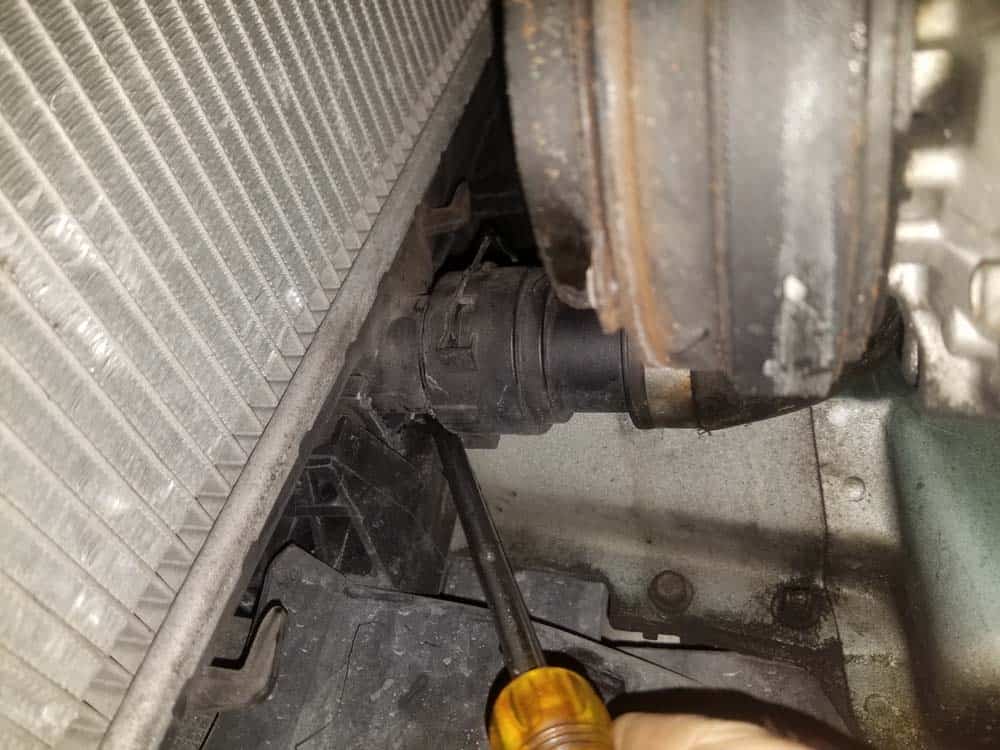
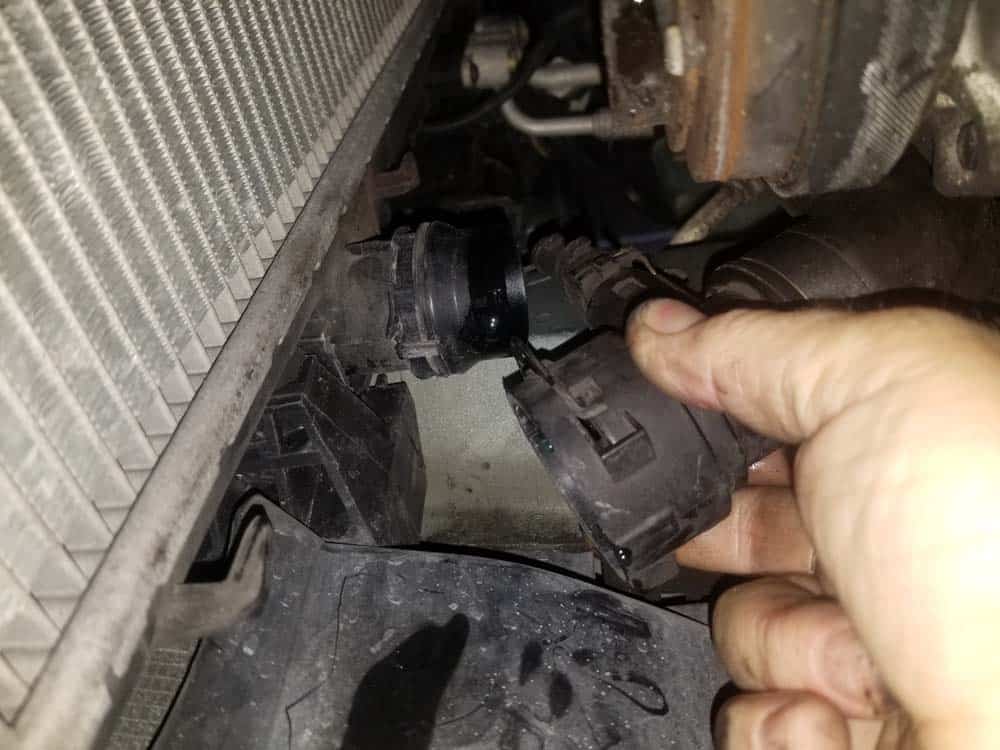
- If your car has an automatic transmission, you will need to remove the transmission fluid cooler from the bottom of the radiator. First, locate the fluid cooler on the left side of the car.
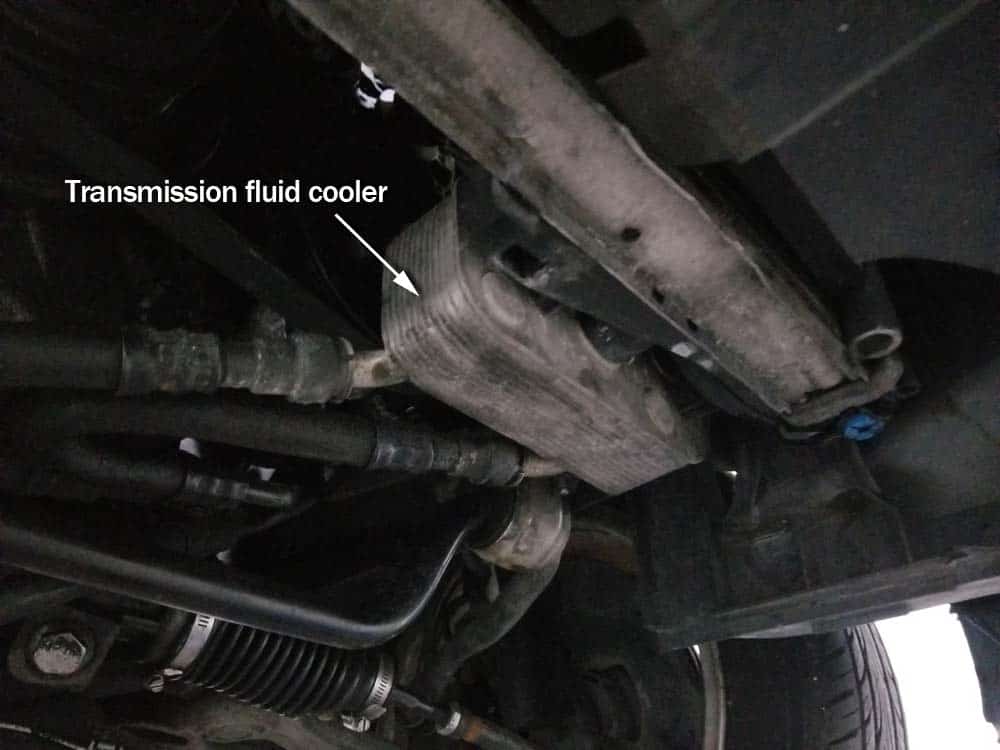
- Release the metal locking clamp that secures the fluid cooler to the radiator. The locking clamp has a plastic pull attached to the top of it. Locate the plastic pull and lift it up to release the clamp. If the plastic pull is being stubborn, you can bypass it by just pushing the clamp up from the bottom of the fitting with your fingernail or a small screwdriver (see image below).
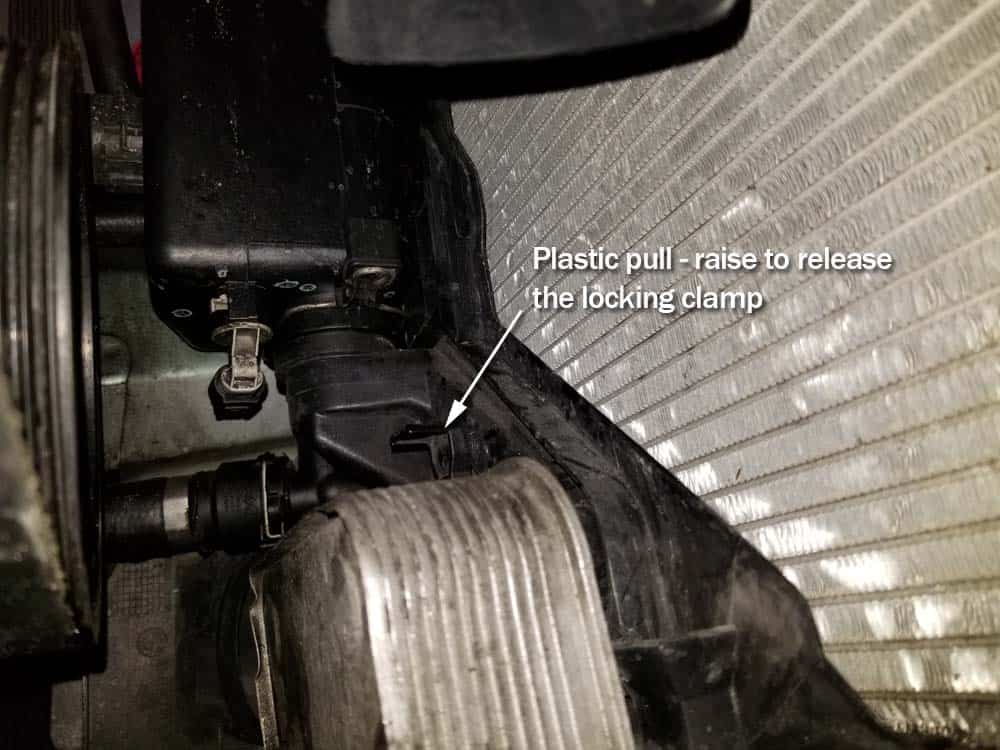
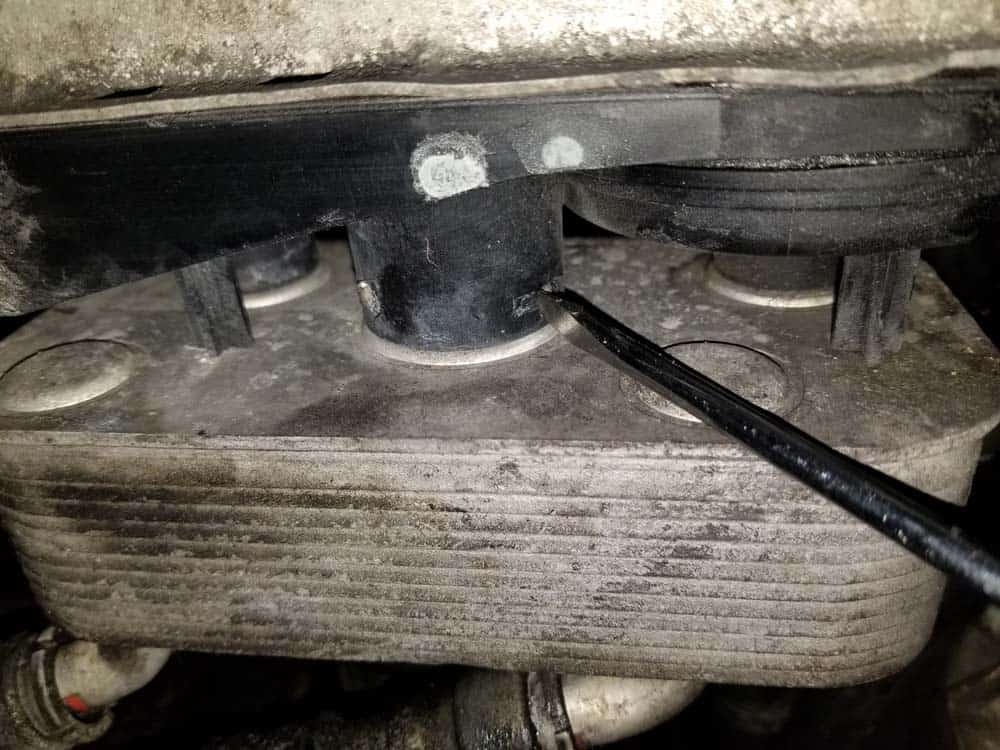
- Position a drain pan under the transmission cooler. DO NOT put your face under the cooler when removing it...there is quite a bit of coolant left in it. Grasp the transmission cooler with two hands and pull it loose from the radiator.
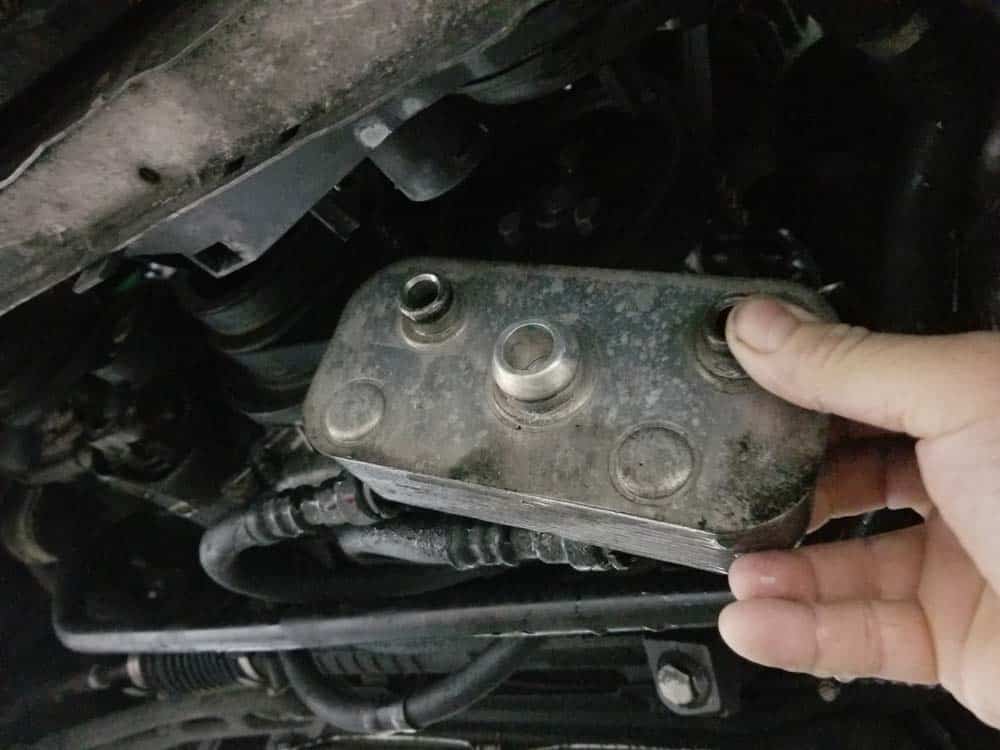
- Next, release the metal clip on the lower left radiator coolant hose. This coolant hose can be very difficult to remove. Take your time, carefully rocking it back and forth to loosen it. If you still cannot get it to release from the radiator, try using a large pair of slip joint pliers (see image below) to gently rock it while pulling. Use a large flat blade screwdriver to try and gently pry it off while pulling with the pliers, being careful not to damage any fittings. Remove the hose from the radiator.
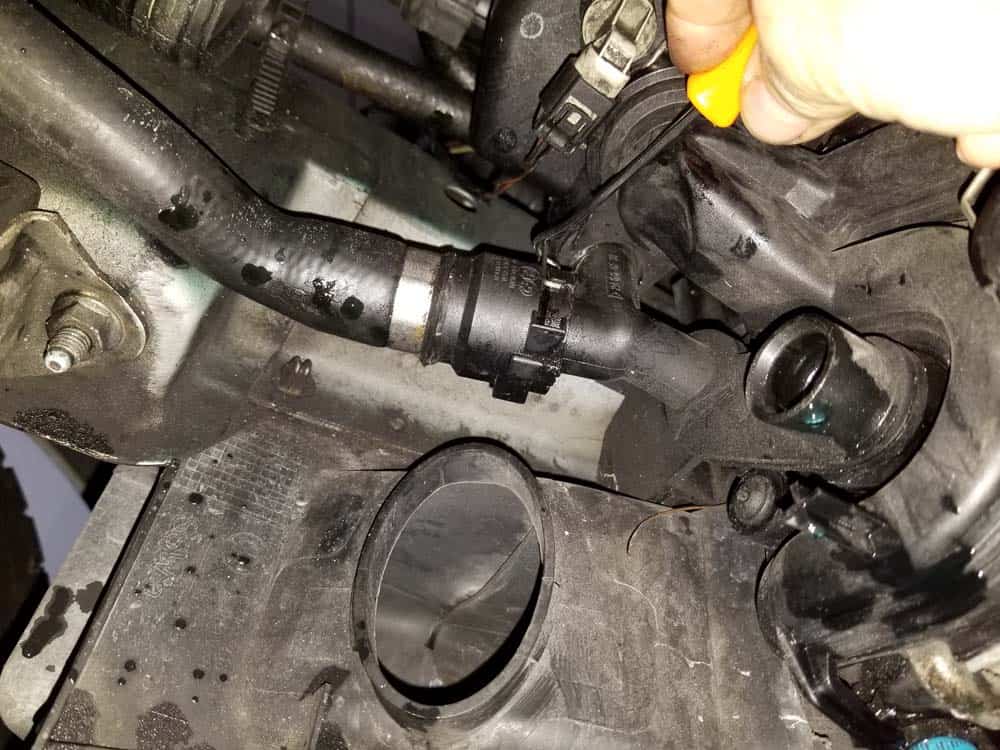
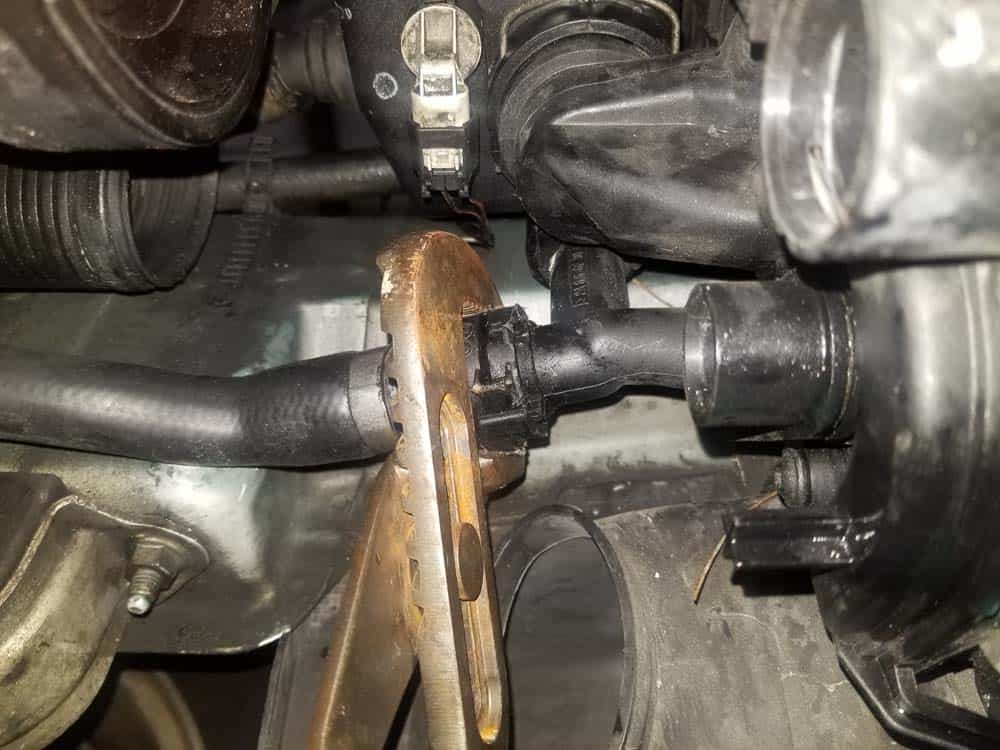

Section 2 - Removing the Fan Shroud and Cooling Fan
The fan shroud and cooling fan must be cleared out to allow enough space to remove and reinstall the radiator. The cooling fan is notoriously difficult to remove on many BMW E46s due to its mounting nut (clutch nut) seizing to the pulley that spins it. We give directions below on how to remove the fan and shroud if you encounter a seized clutch nut during your repair.- Start by disconnecting the mass air flow (MAF) sensor.
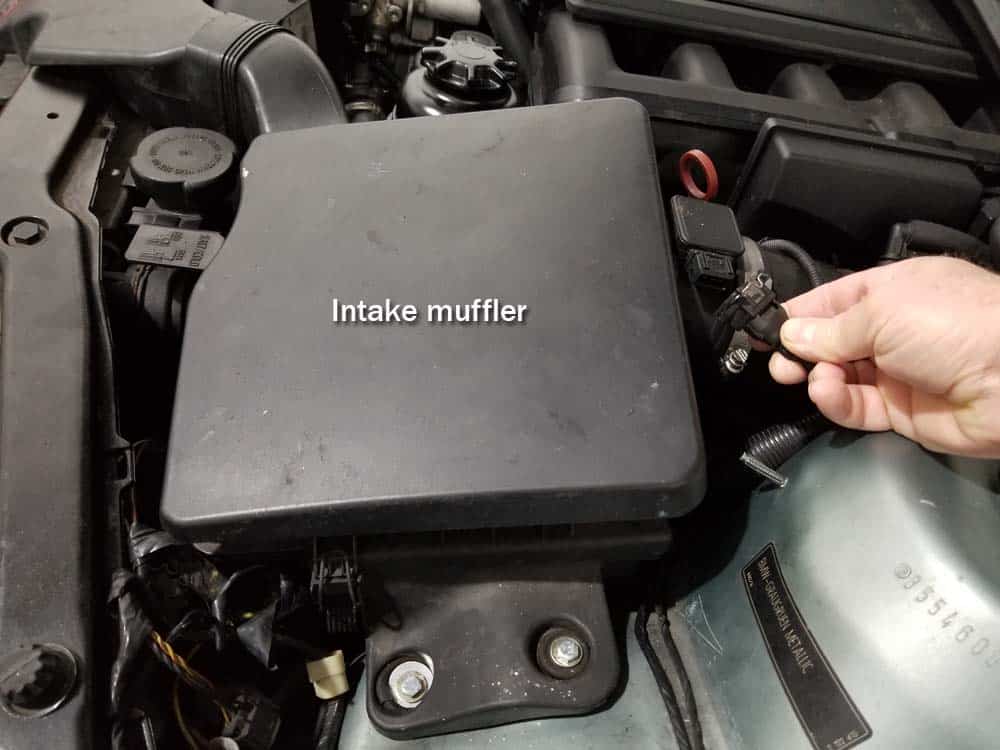
- Using a flat blade screwdriver, loosen the hose clamp on the intake boot.
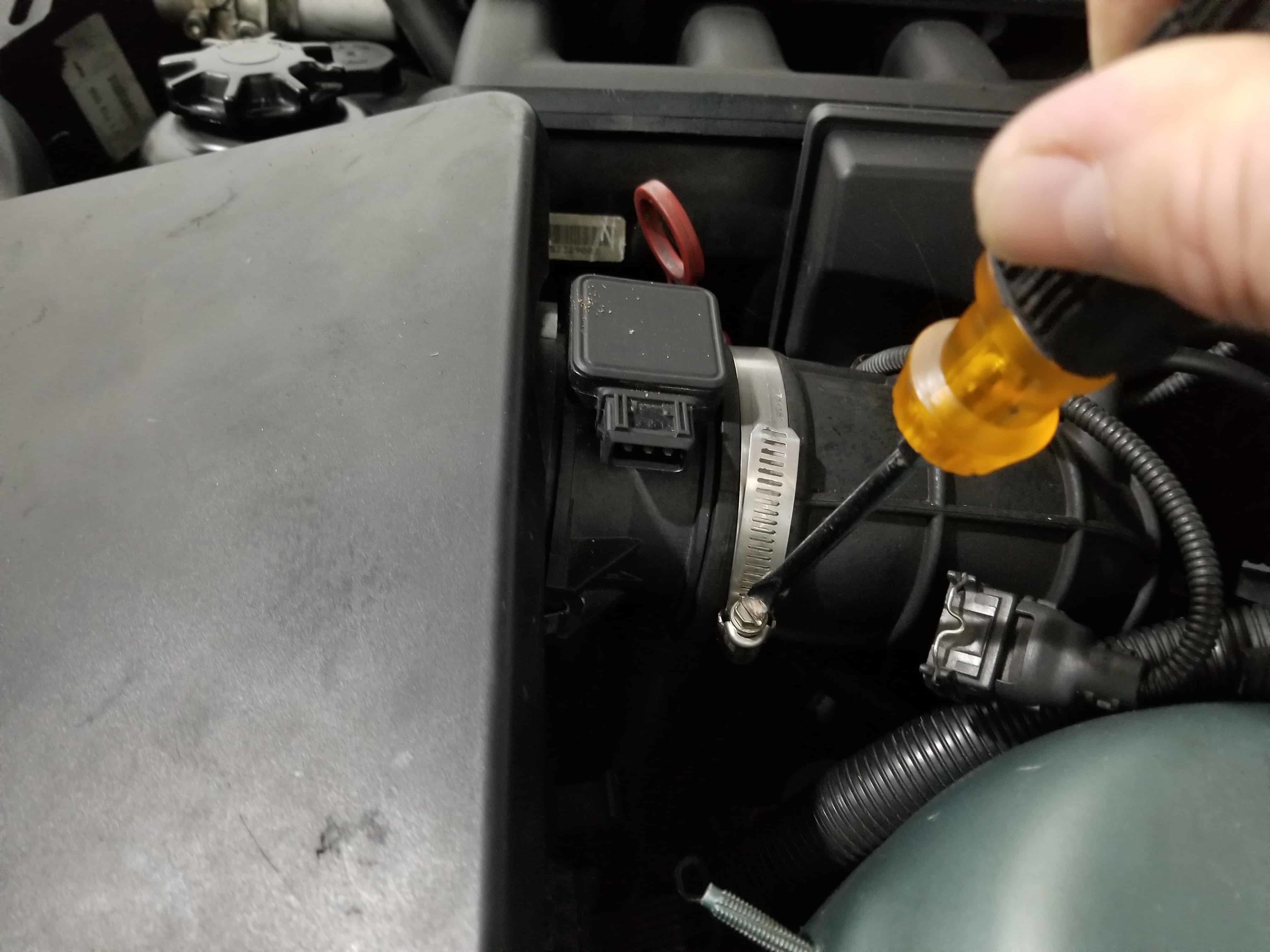
- Unlatch the four clamps on the lid of the intake muffler. Note that one of the clamps is difficult to get to…use a metal pick to release if you can’t reach it with your fingers. Remove the lid from the vehicle.
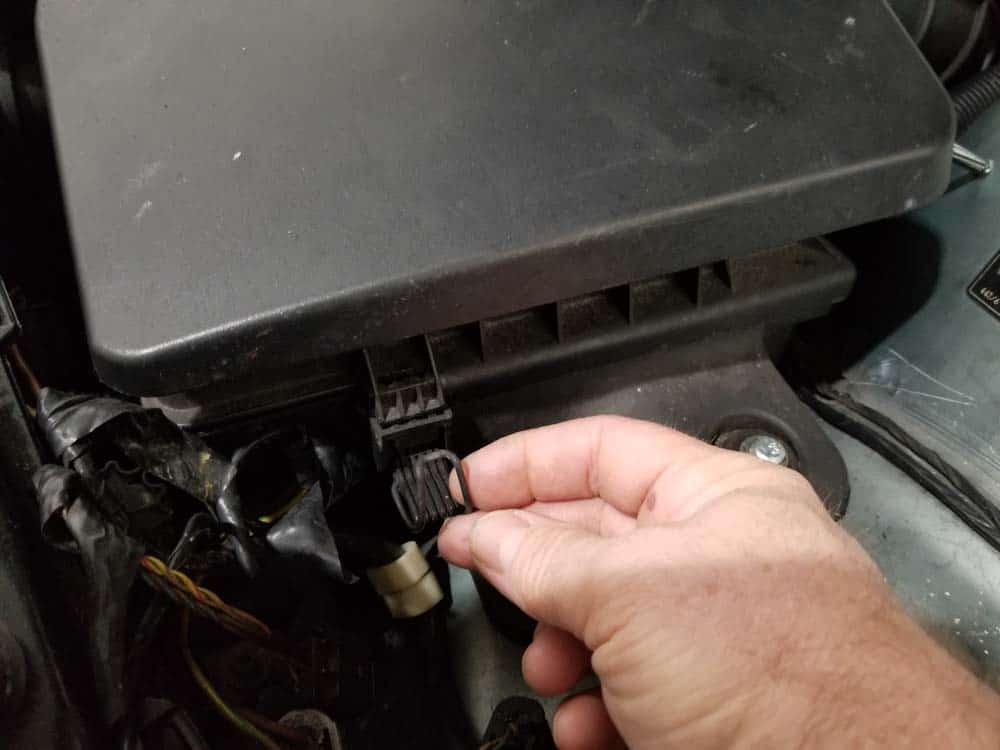
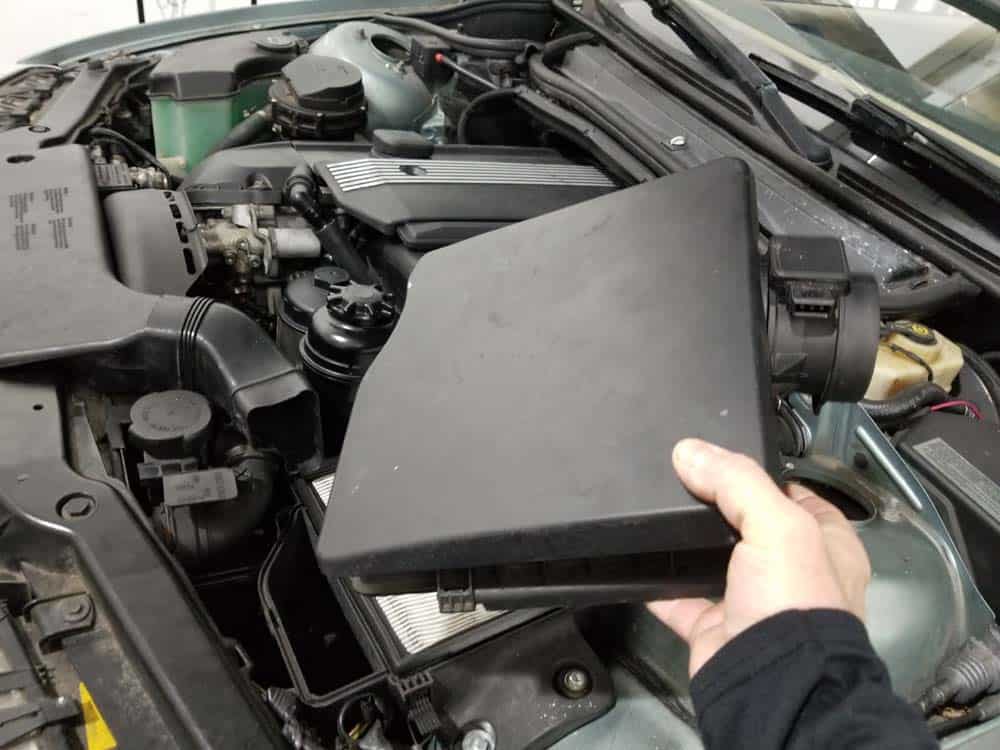
- Using a 10mm socket wrench, remove the two intake muffler mounting bolts. Remove the intake muffler from the engine compartment.
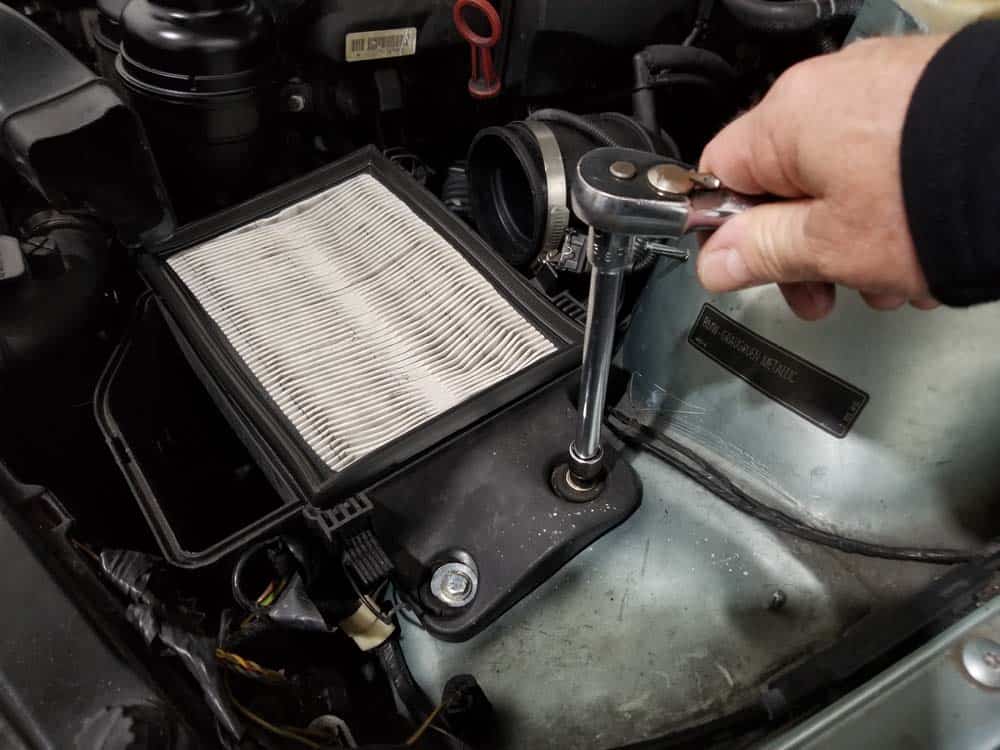
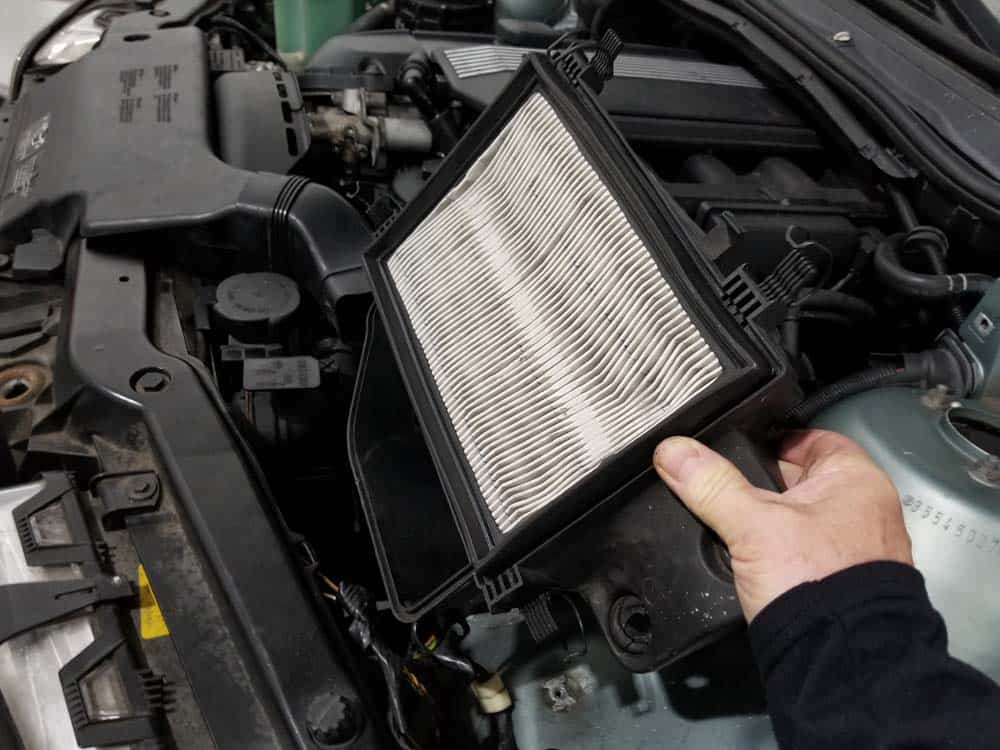
- Remove the plastic air intake tube.
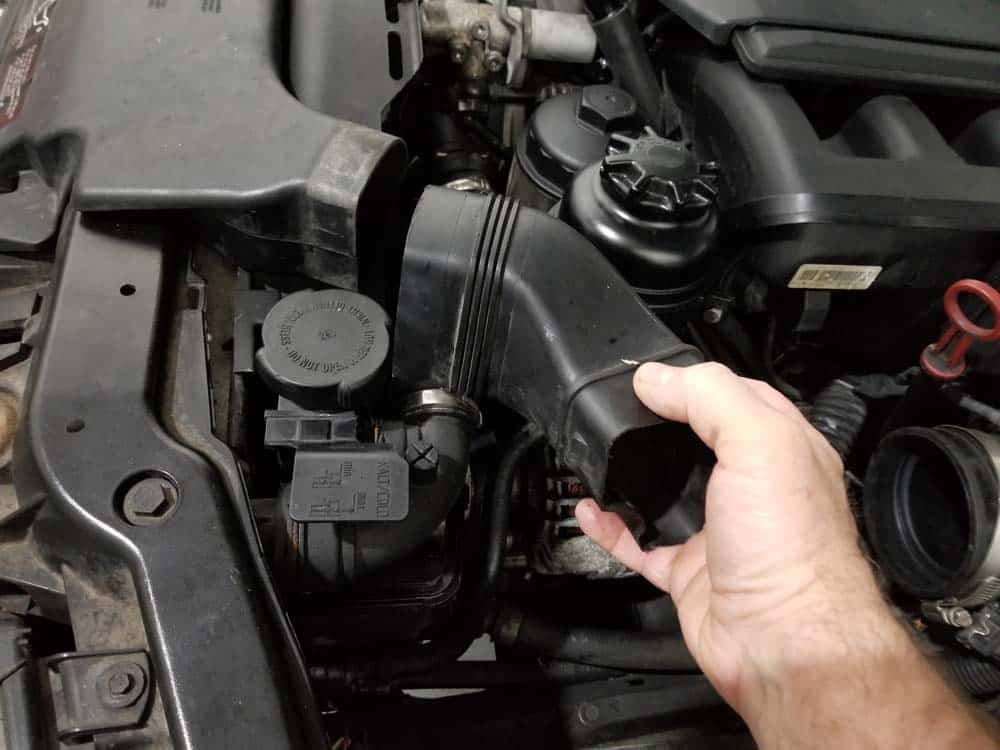
- Use a trim removal tool to remove the three plastics rivets anchoring the air intake to the frame of the vehicle. Remove the intake from the vehicle.
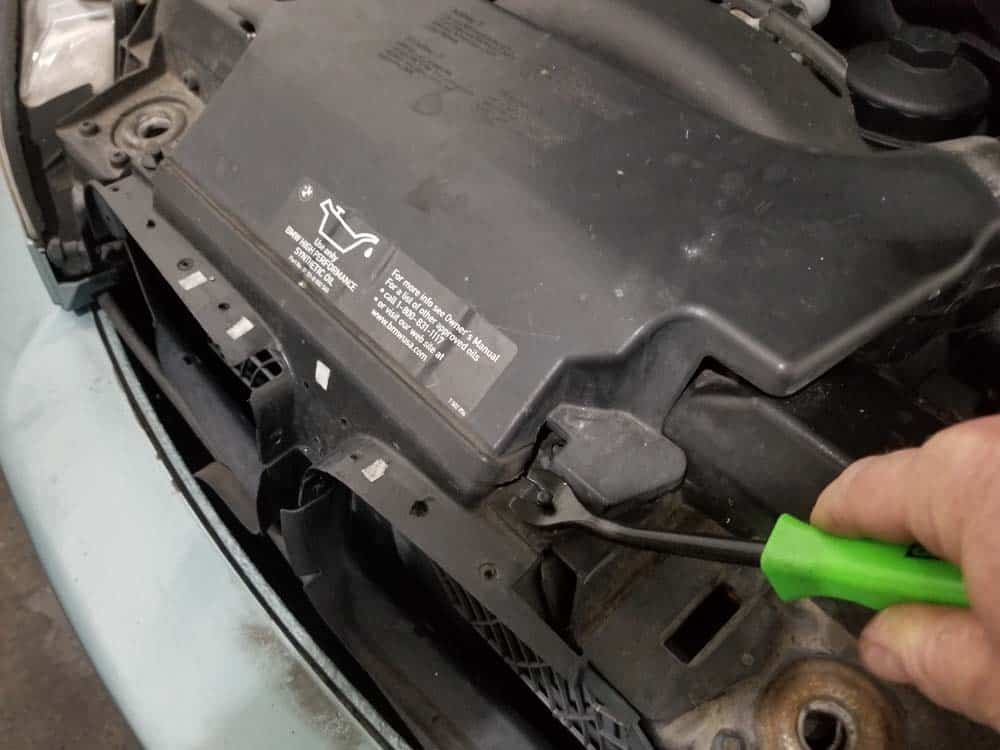
- Remove the air quality sensor and the wiring harness connector from the fan shroud and safely tuck out of the way.
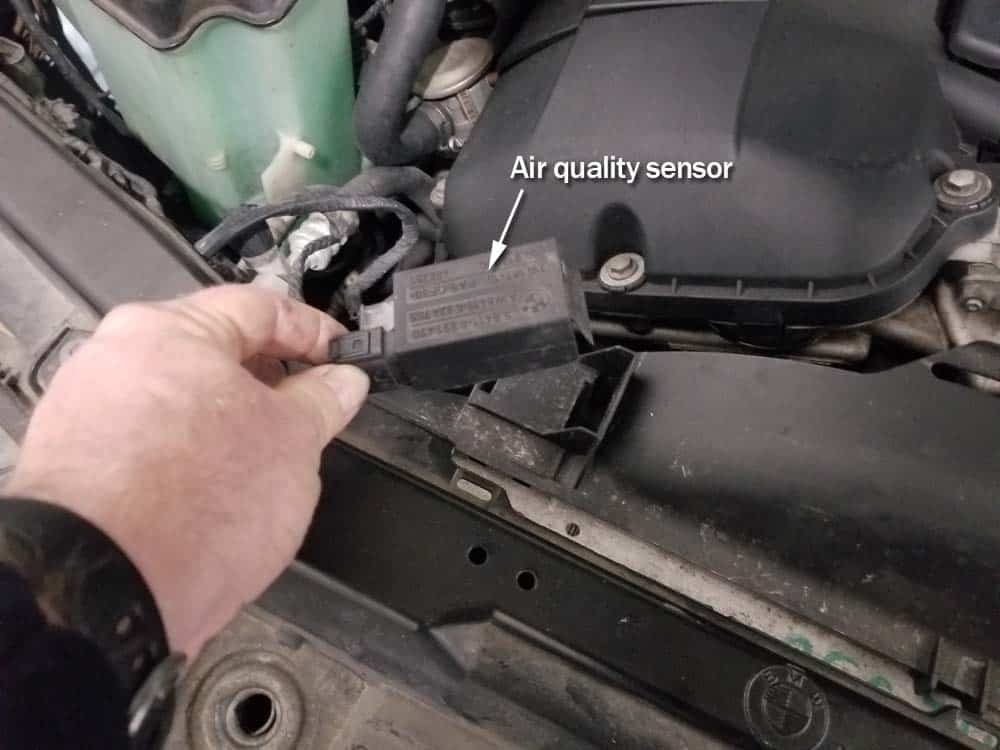
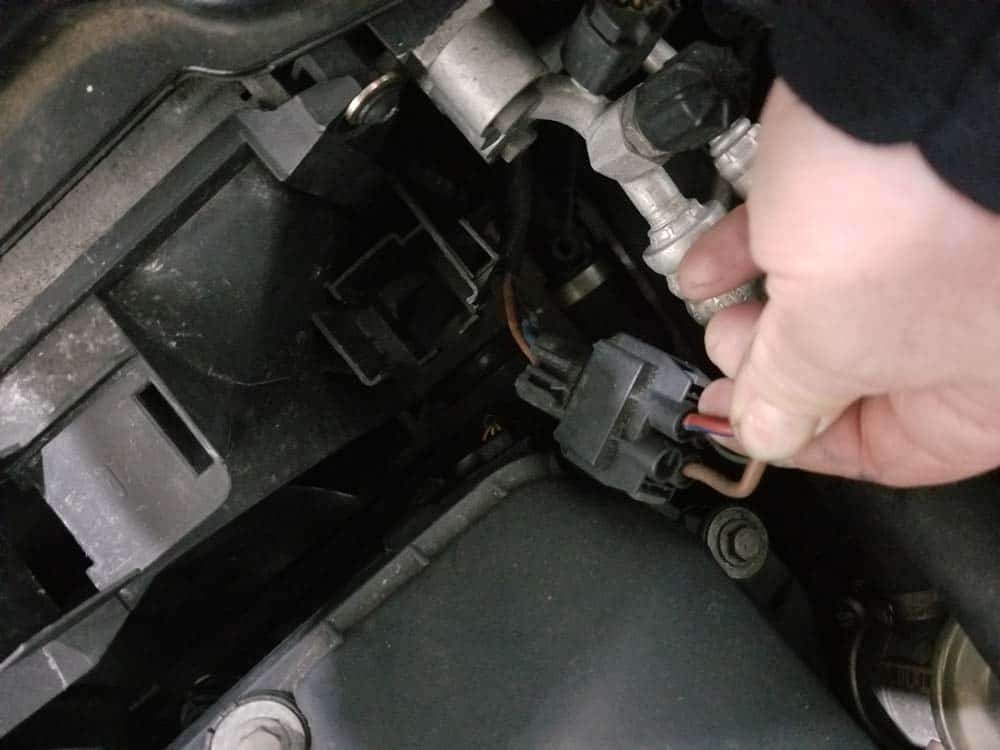
- Release the clamps securing the upper radiator hose to the thermostat housing and the expansion tank. Remove the hose from the engine.
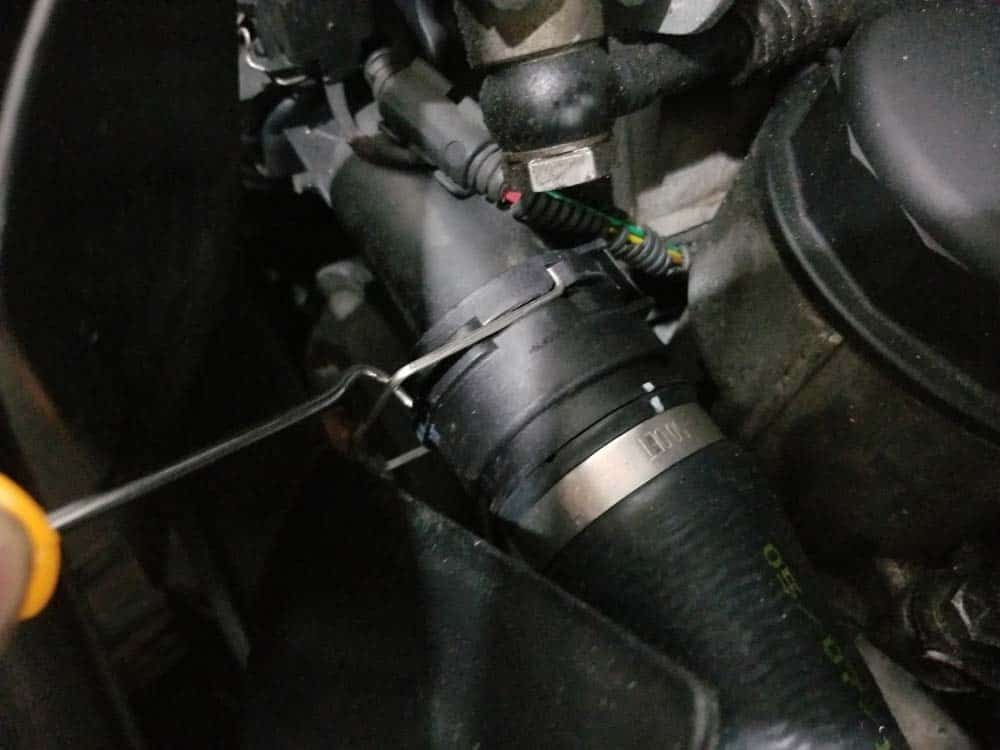
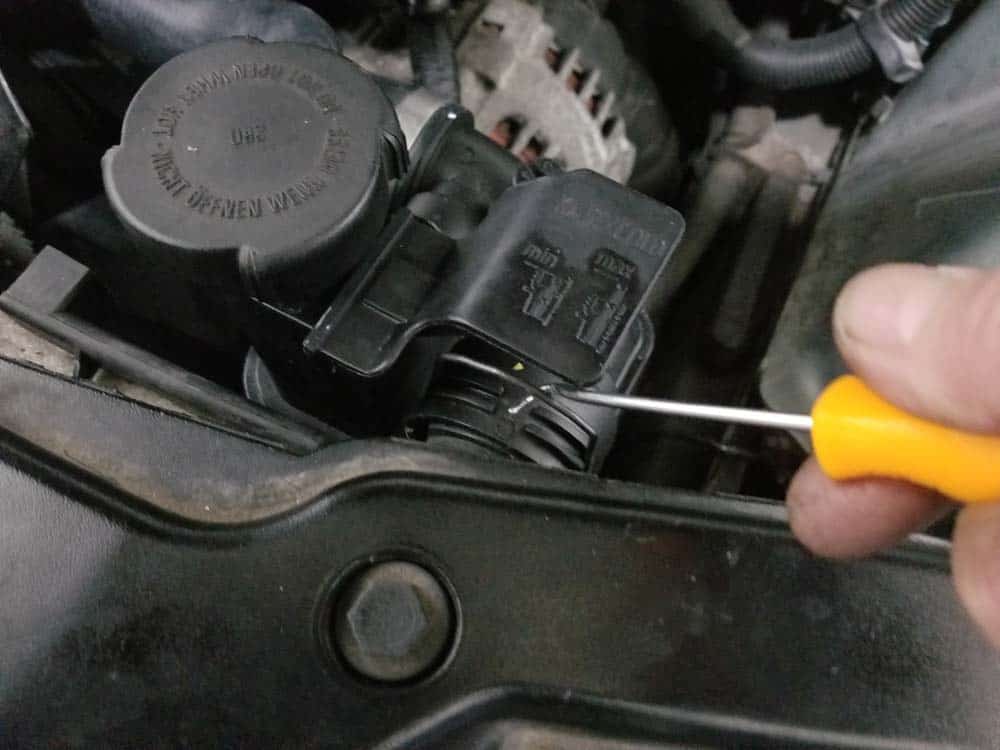
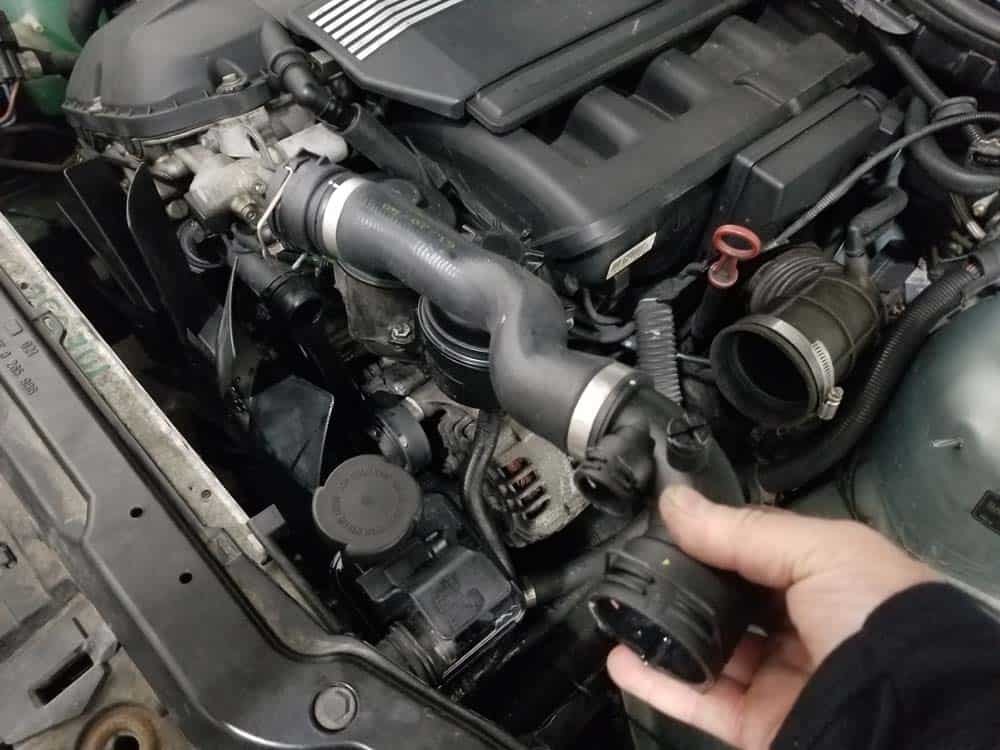
- Don’t try and remove the fan shroud yet...it is easier to remove with the cooling fan and fan clutch. There is also less chance of breaking the fan shroud if you remove it with the cooling fan.
- Next, the infamous cooling fan and fan clutch must be removed from the water pump pulley. If the nut on the fan clutch is seized and cannot be removed from the water pump pulley with the special fan clutch removal tool (which is a very common occurrence), then you will have to unbolt and remove the cooling fan from the clutch. Remember the fan clutch nut is a reverse thread...you must turn it clockwise to loosen it.
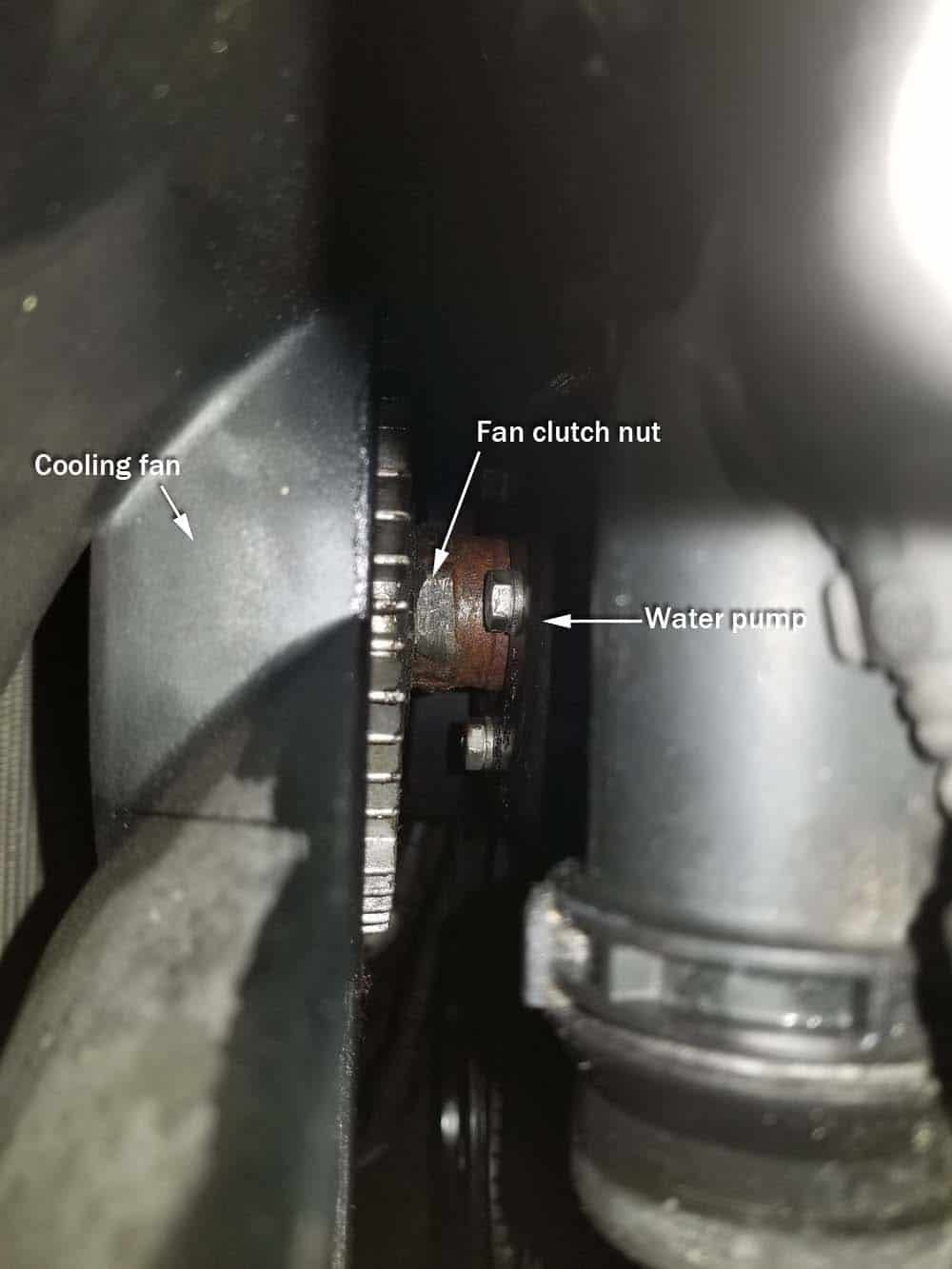
- The first step in all of this is to try and remove the fan clutch from the pulley with the special fan clutch removal tool. Place the fan clutch tool on the pulley and the clutch nut as shown in the following image. Remember the fan clutch nut is a reverse thread...you must turn it clockwise to loosen it.
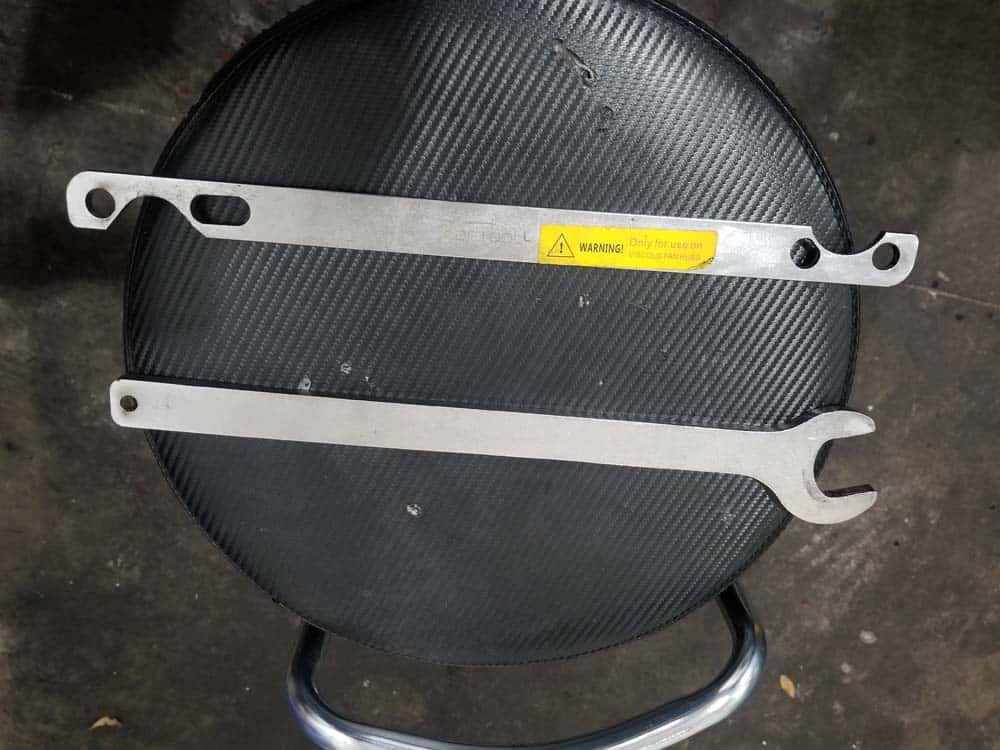
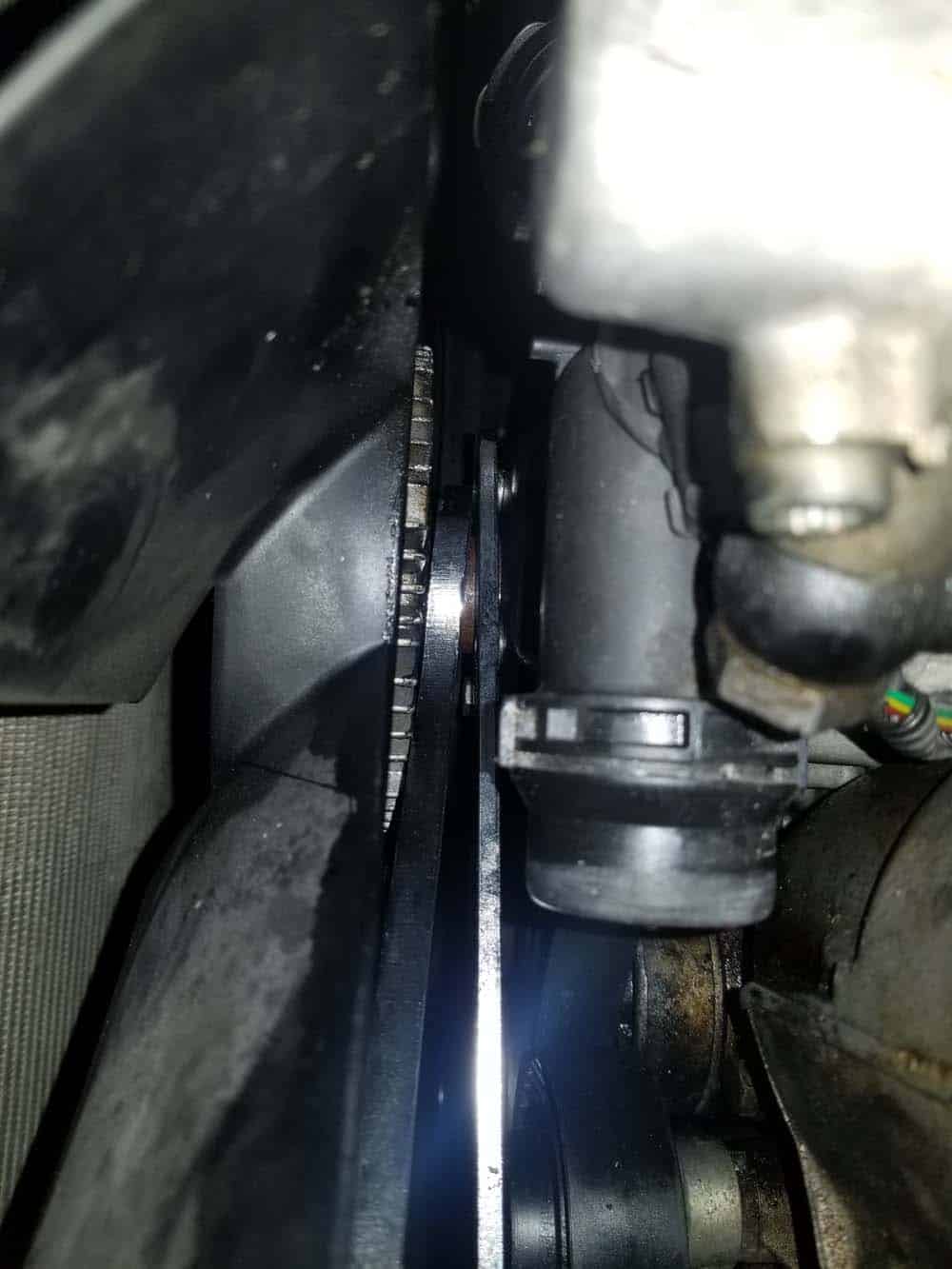
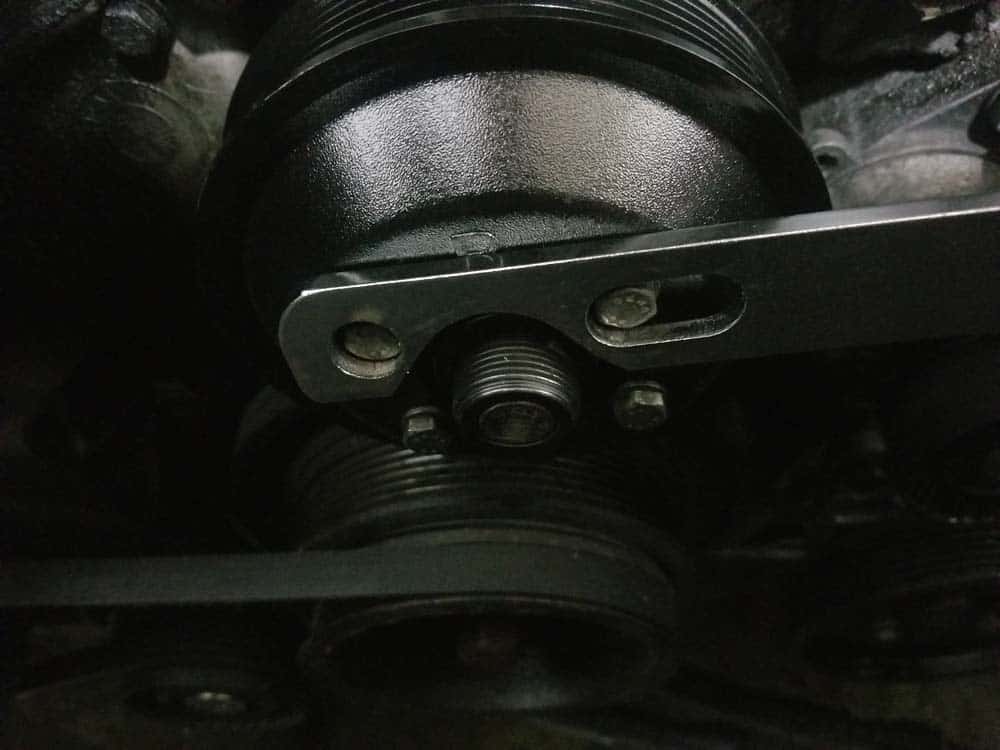
- The nut is a reverse thread...this means you must turn the nut CLOCKWISE to remove it.
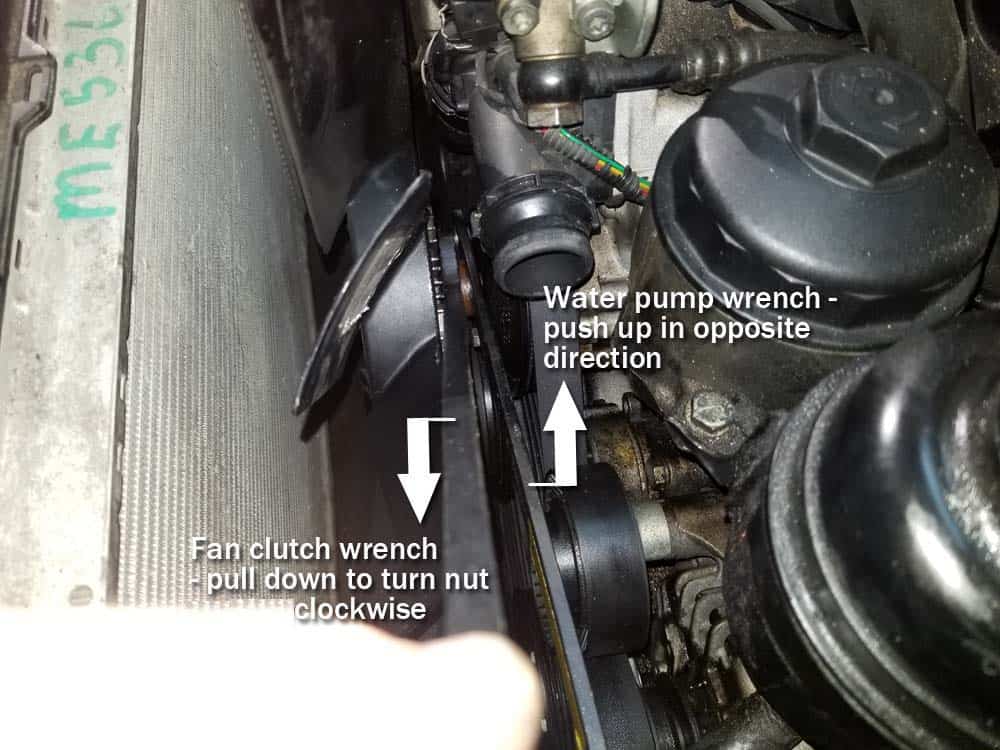
- If you can loosen the nut, then spin the fan clutch nut off of the pulley. If the nut is seized and cannot be removed, then you will need to follow additional steps below to remove the cooling fan blades. Either way, proceed to the next step #14.
- Remove the right T27 torx radiator anchor screw. This screw also anchors the fan shroud to the radiator. The left side of the fan shroud is anchored to the radiator with a plastic rivet. Remove the rivet with a trim removal tool.
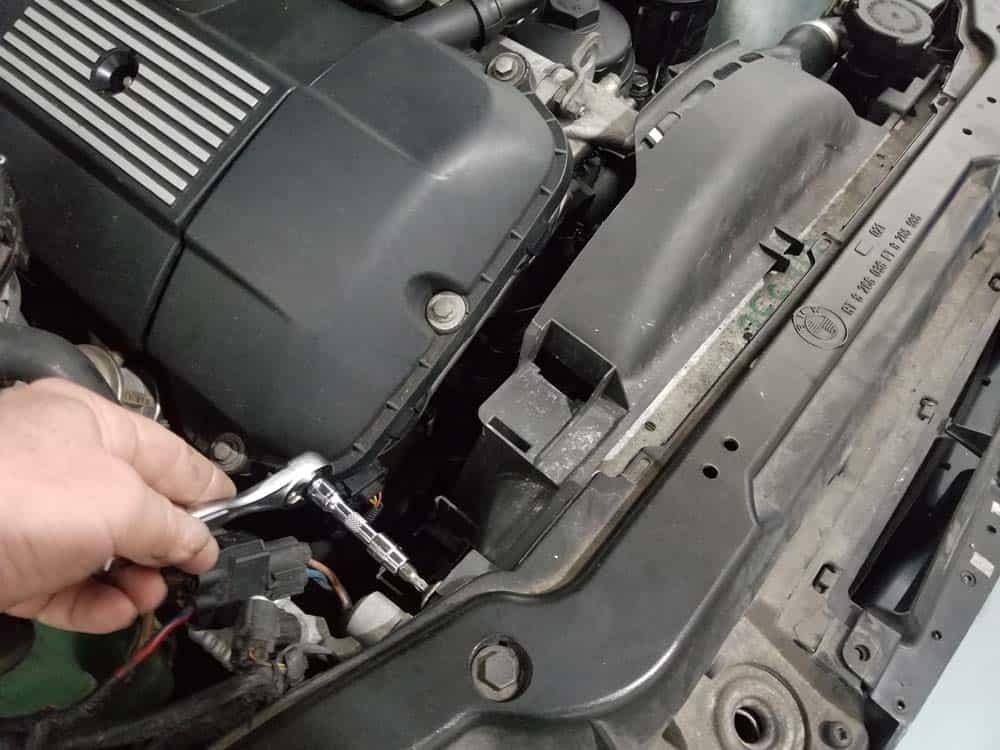
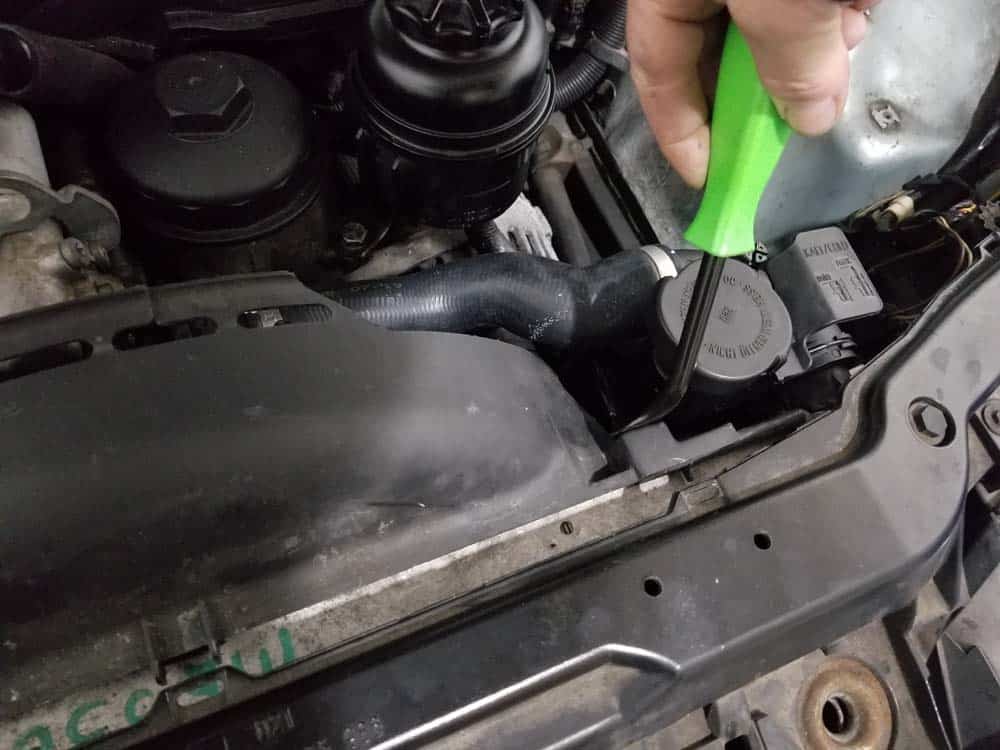
- If you were able to remove the fan clutch from the water pump pulley, grasp the shroud and the cooling fan and slowly remove them from the engine compartment together and proceed to Section 3 below. If the nut was seized and you could not remove the fan, proceed to the next step #16.
- If the clutch nut is frozen and you could not loosen it, slowly pull the shroud up and out of the front of the vehicle around the cooling fan. Don’t pull on it if it gets hung up...you may have to get under the front of the car to help guide it behind the fan blades. Take your time and do your best to get it out with minimal damage to the shroud.

- Use a T30 torx bit to remove the three fan clutch mounting bolts. Remove the cooling fan from the vehicle.
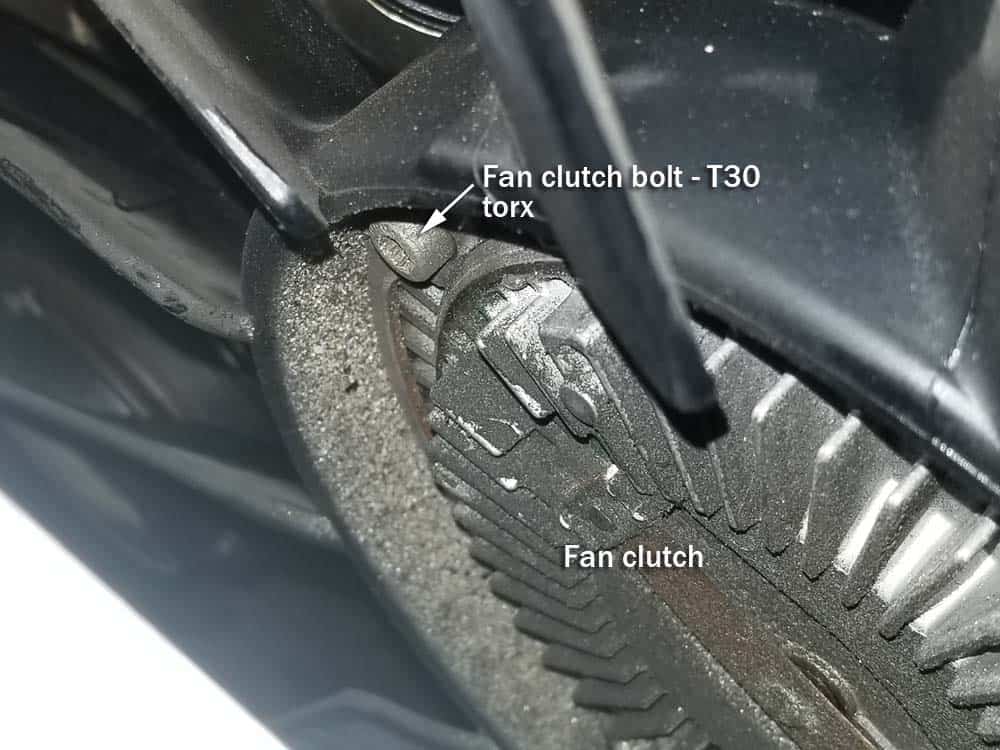
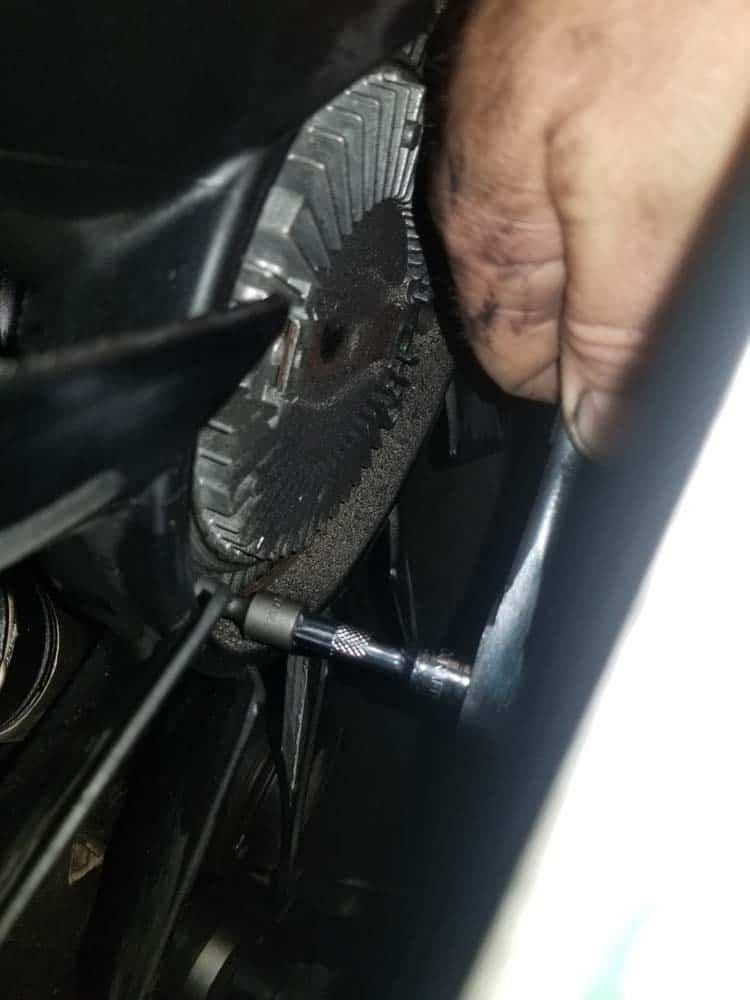
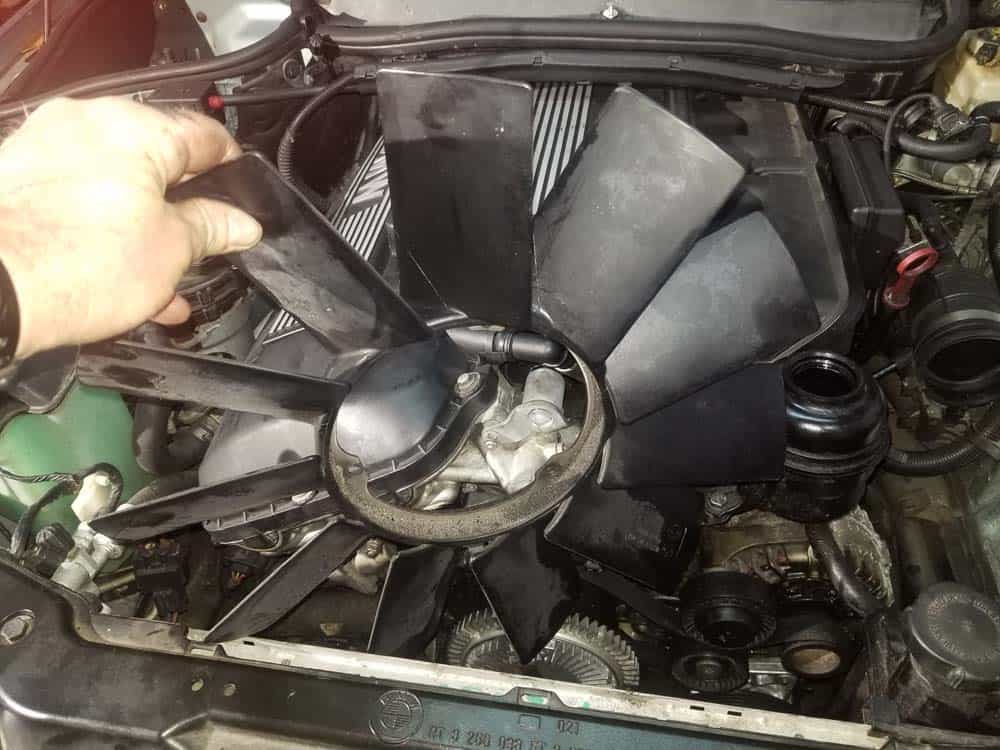
Section 3 - Removing the BMW E46 Radiator from the Vehicle
- Locate the lower coolant hose attached to the rear of the expansion tank. Use a metal pick to release the locking clip on the end of the hose. Pull the hose loose from the expansion tank.
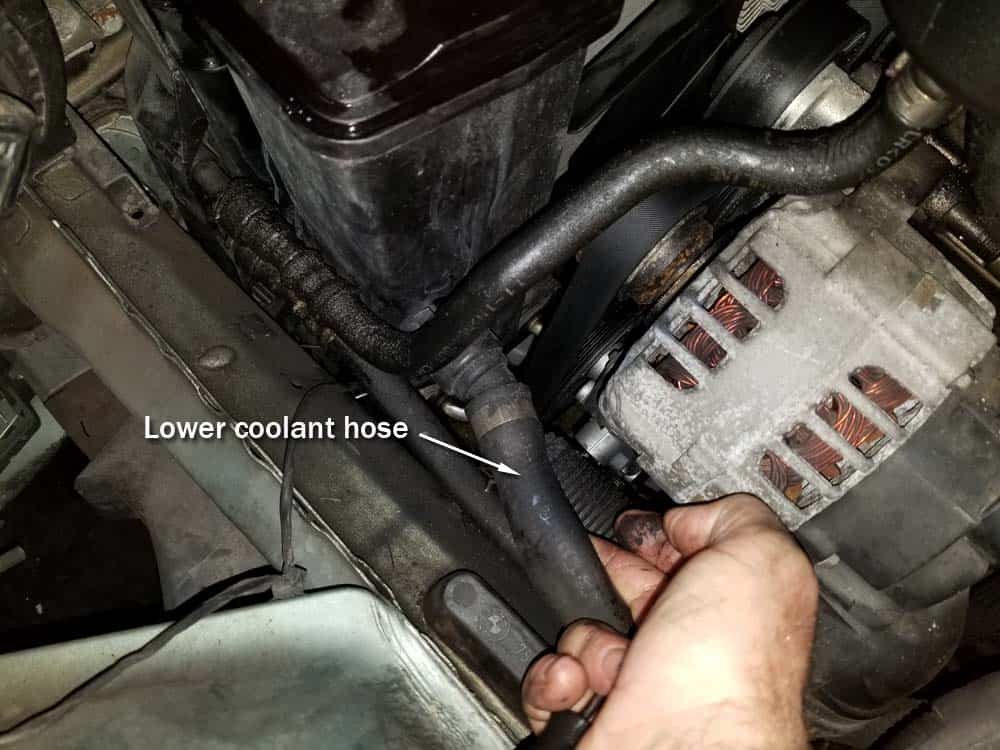
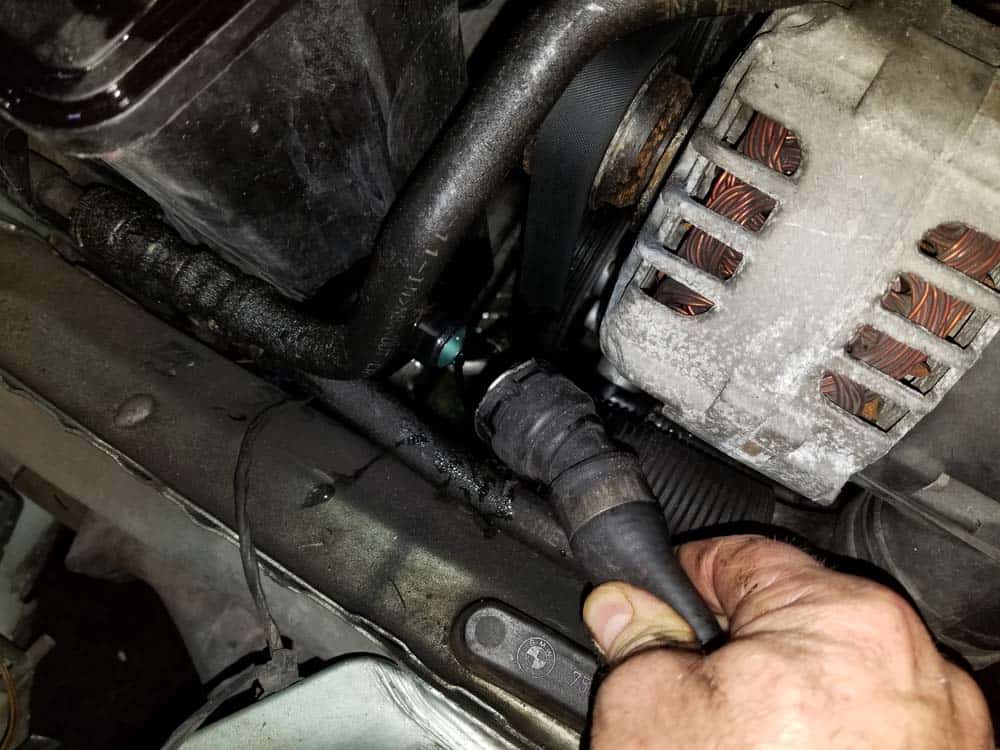
- Remove the coolant expansion tank by releasing the locking clamp on the bottom of the tank. The locking clamp is located on the bottom right side of the tank. To release the clamp, simply reach your hand down and slide it out.
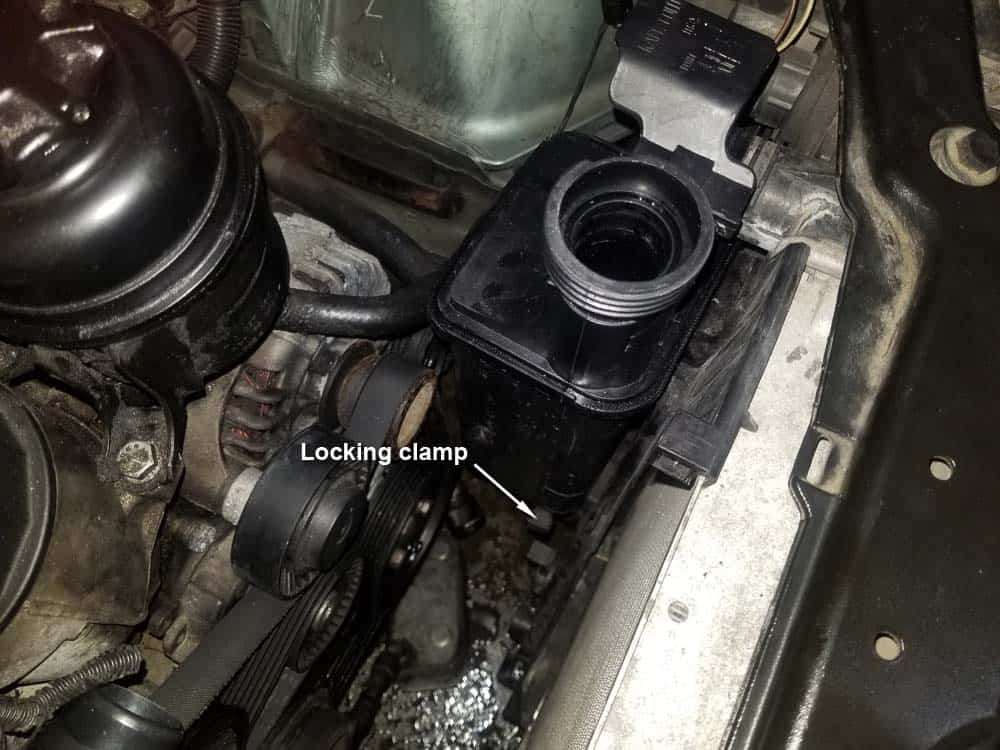
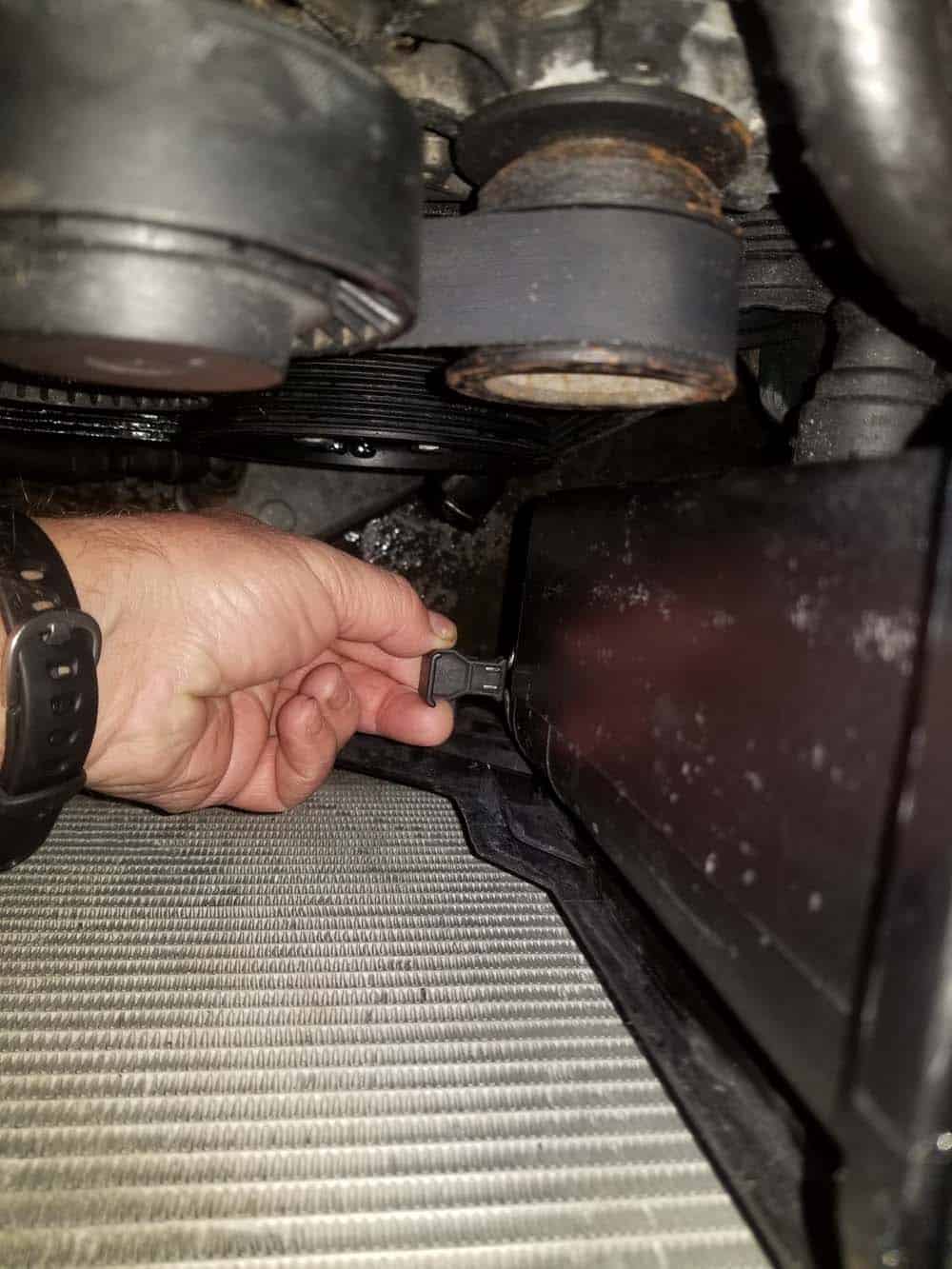
- Grab the top of the expansion tank with two hands and attempt to pull it free from the radiator. You may have to gently rock it back and forth to get it to release. Older tanks may be particularly stubborn and require a couple of small taps with a screwdriver on the bottom to get them to release.
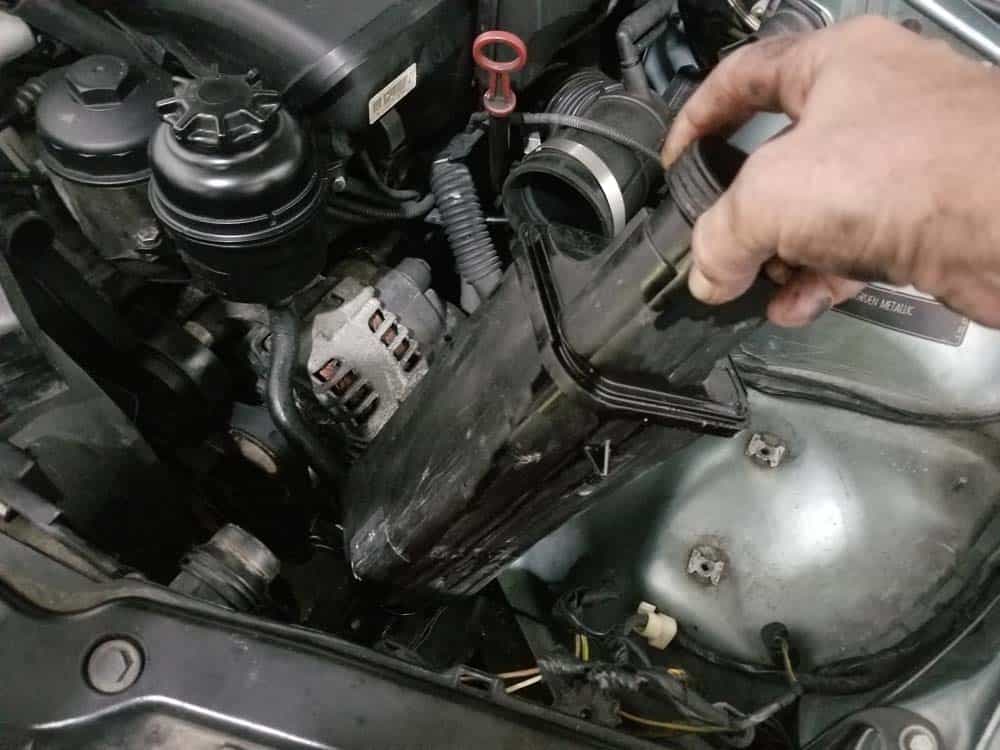
- When the expansion tank is loose, flip it over and disconnect the level sensor.
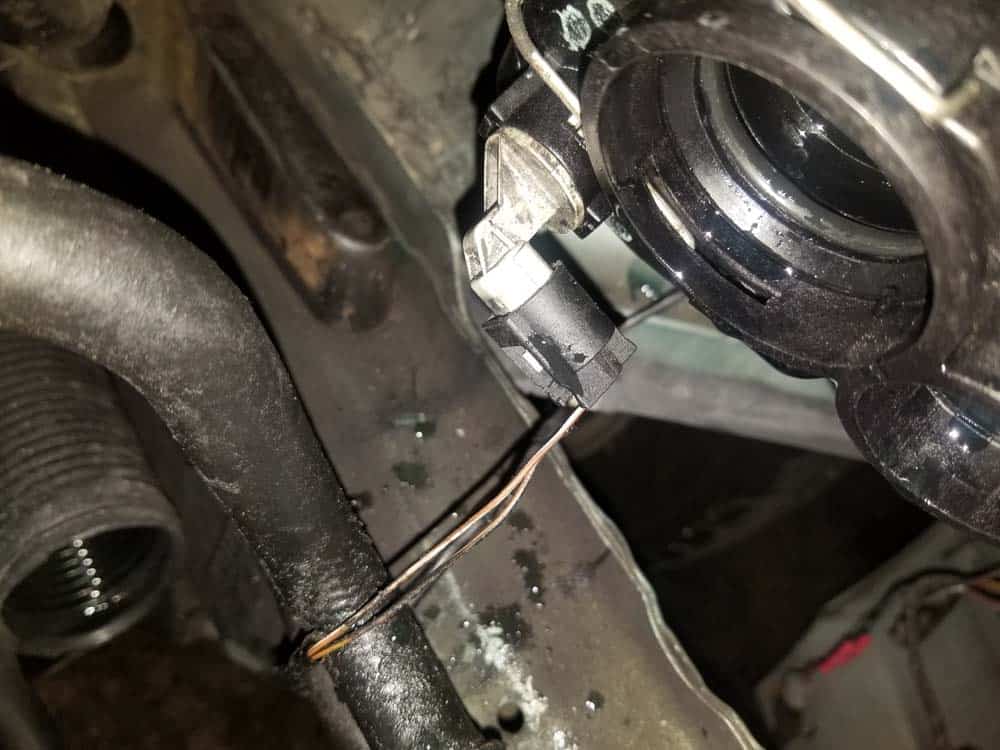
- Use a T27 torx bit to remove the left radiator mounting screw.
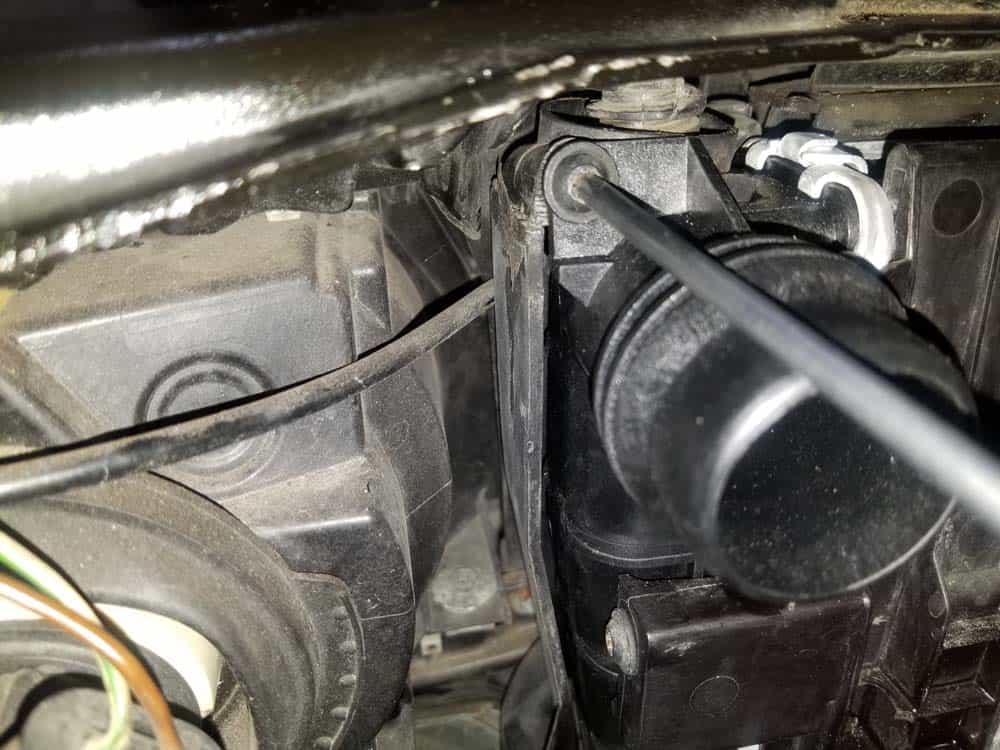
- The radiator can now be removed. Tilt the radiator back, then pull it up and out of the engine compartment.
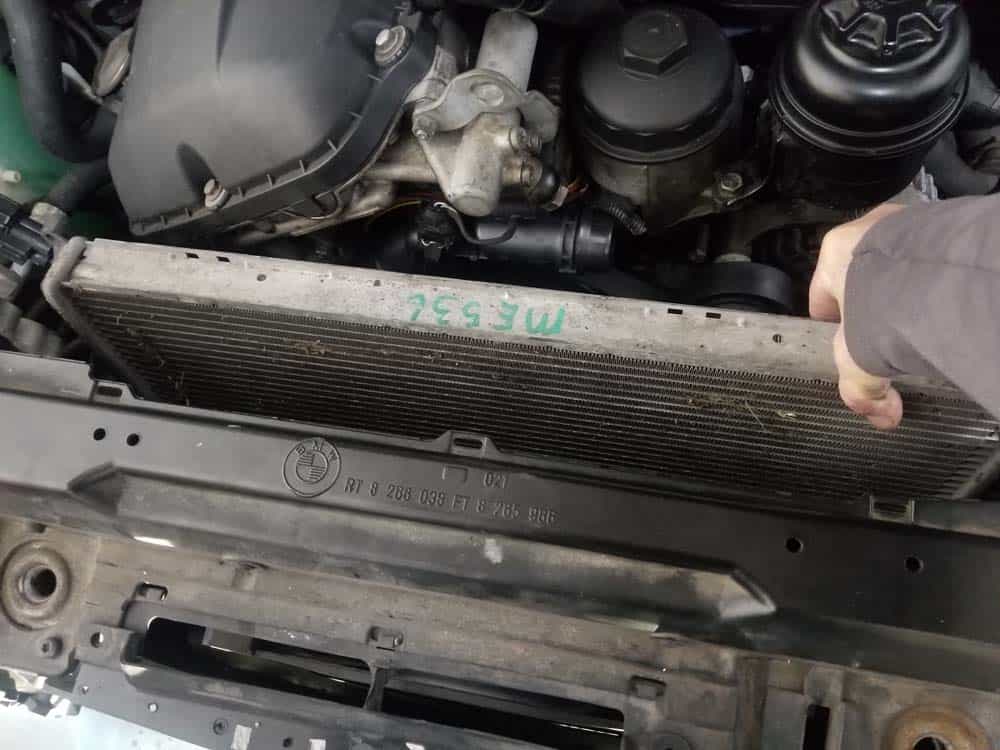
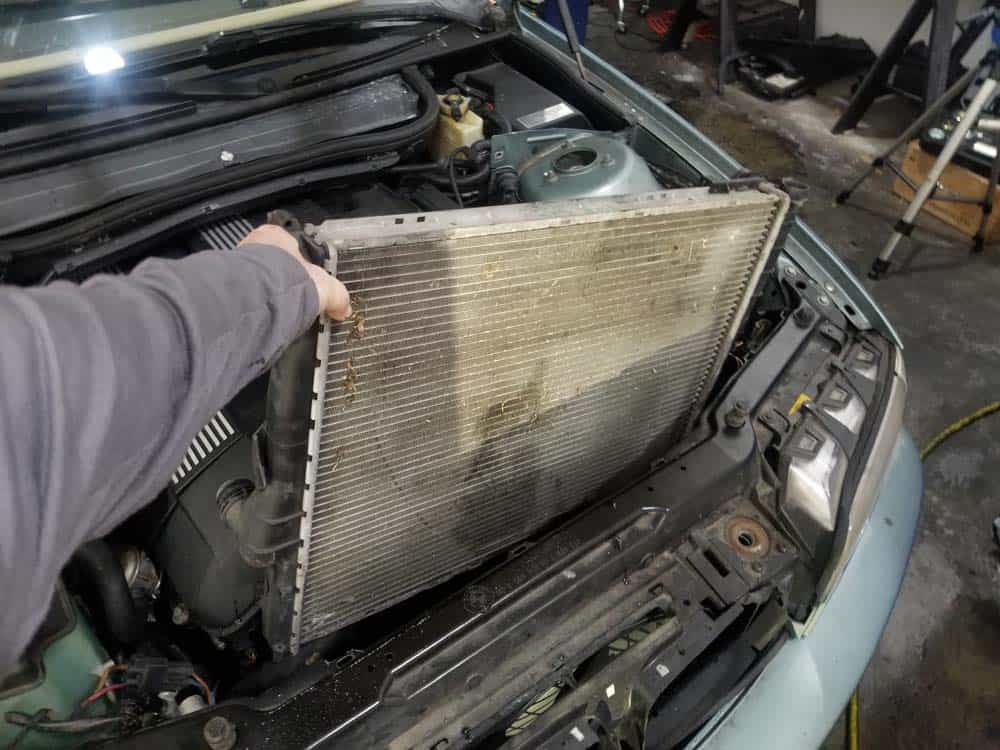
- Lay the old radiator down on a work bench.
- If you are going to reuse the old expansion tank mounting plate, remove the two T27 torx screws anchoring it to the radiator. Use a large flat blade screwdriver to gently pry it off of the radiator fitting. Remove the mounting plate from the radiator.
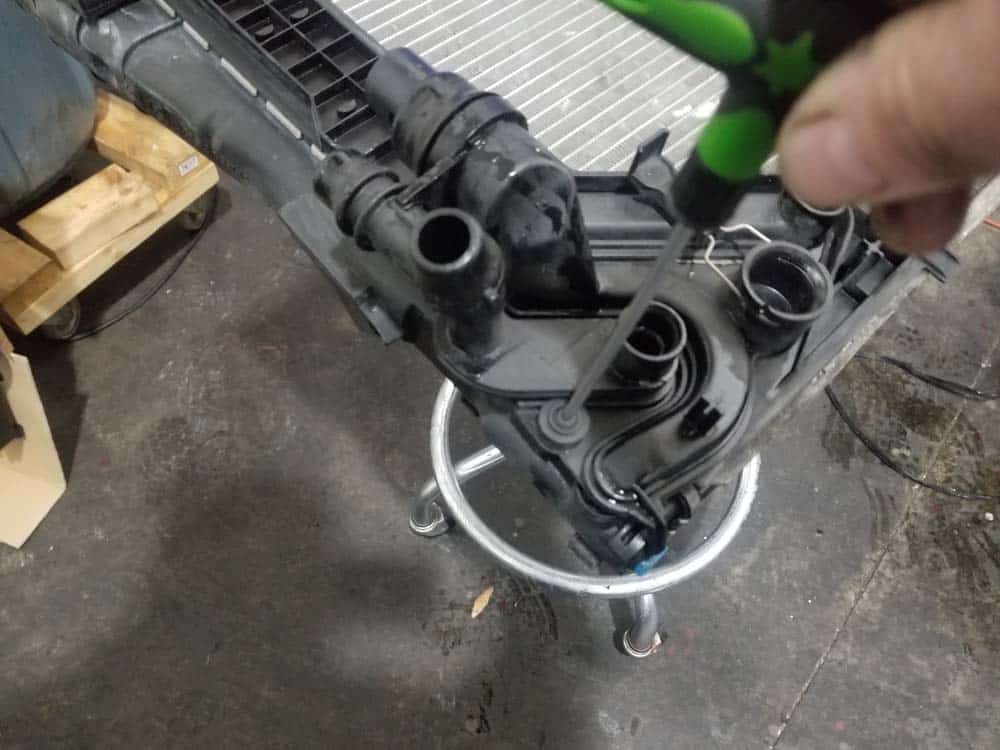
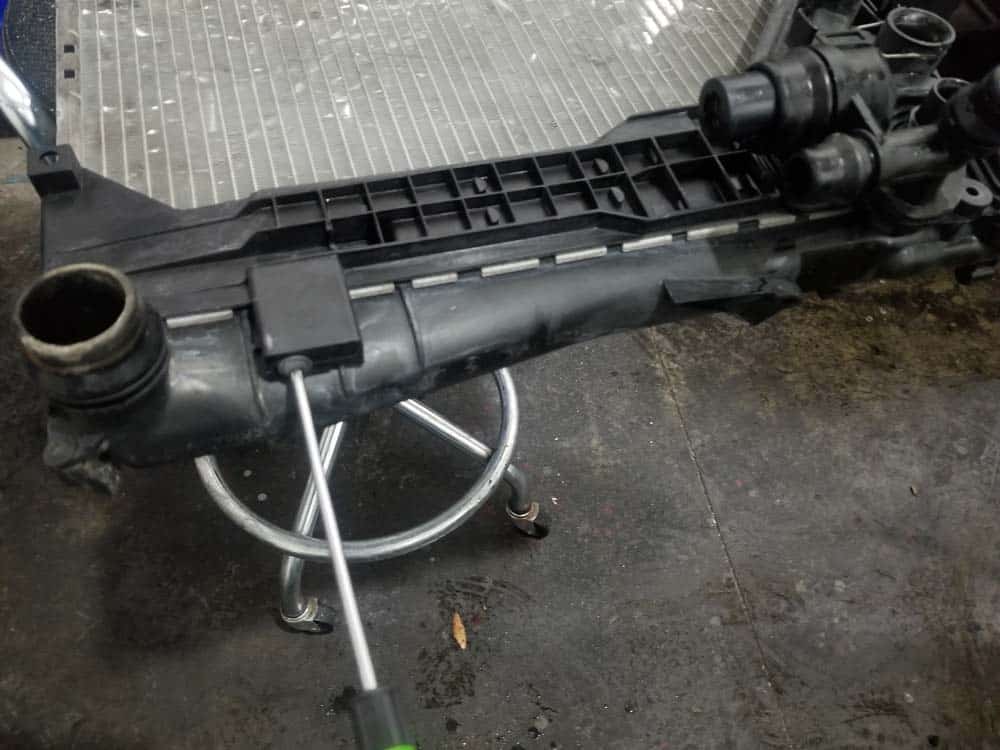
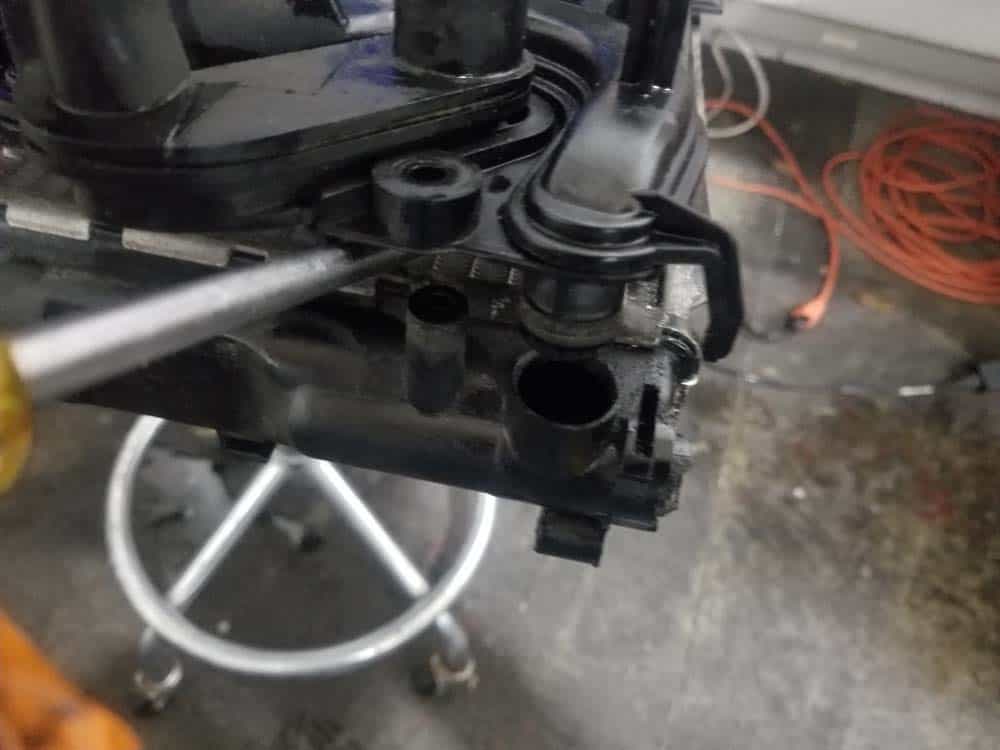
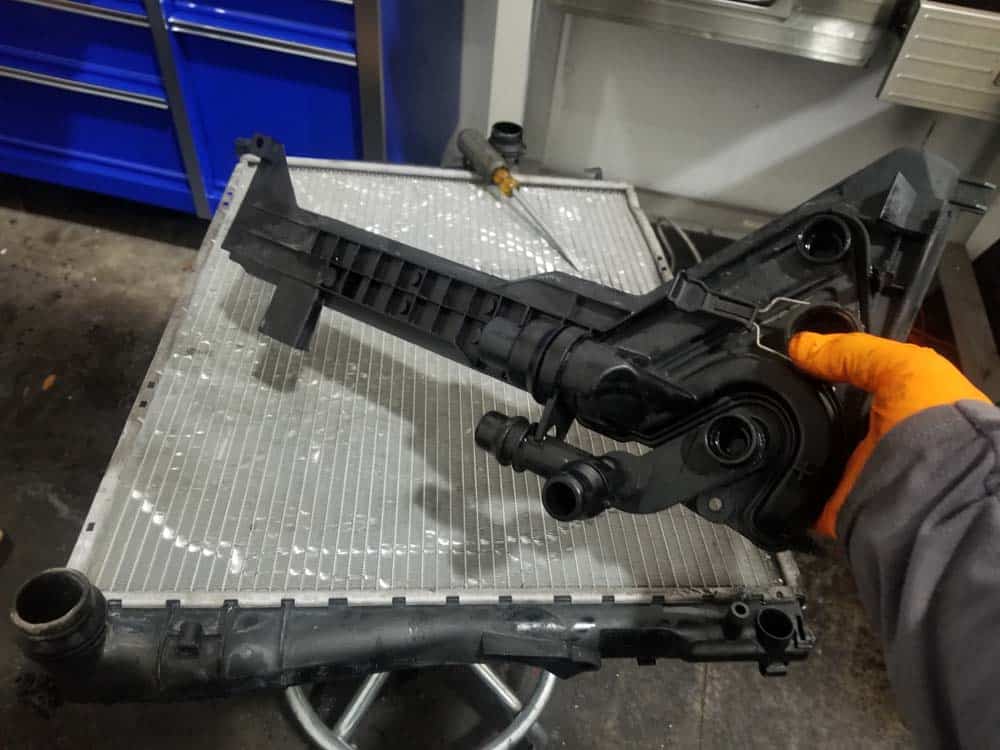
Section 4 - Installing the new BMW E46 Radiator
Installing the new radiator is very straightforward - it is basically following the above instructions in reverse. One problem many mechanics run into is reinstalling the coolant hoses. If you are having issues reinstalling the coolant hoses and getting them to lock into position, apply some liquid dish detergent to the fittings. This will help the hoses slide on without any issues. NEVER use a petroleum based oil or grease on the hose o-rings. This can cause leaks.- Unpack the new radiator and lay it on the work bench. Double check to make sure you have the correct part number.
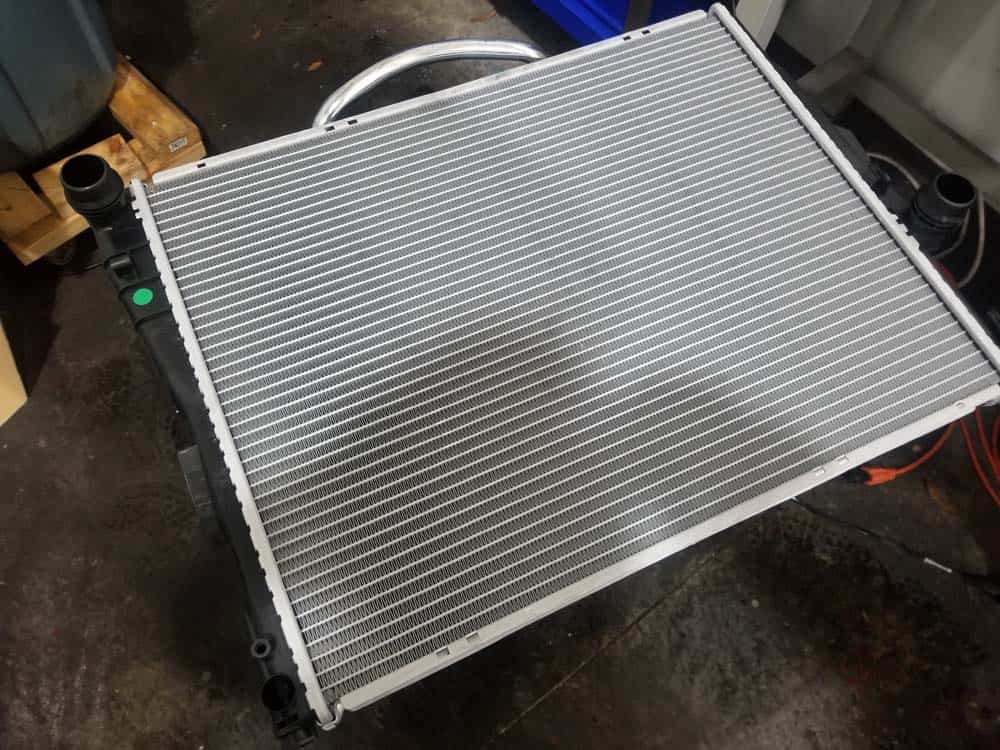
- Some radiators (like ours below) come with the new drain plug already installed. If your radiator was shipped without the drain plug installed...install it now.
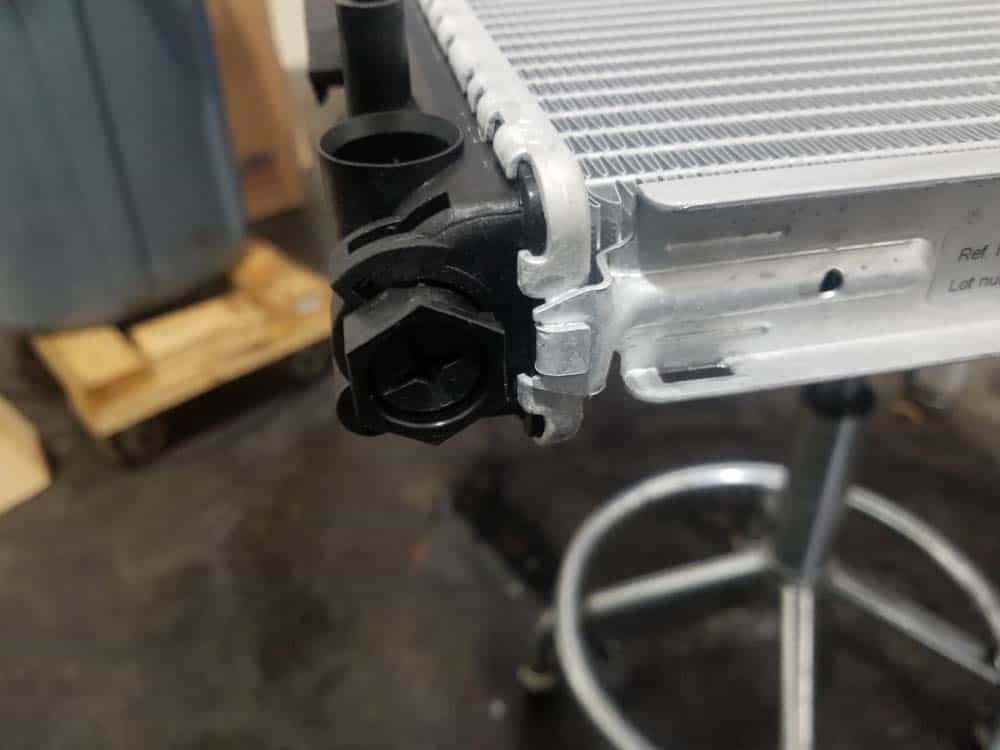
- Install the expansion tank mounting plate on the new radiator, applying pressure with the palm of your hand to insure a tight connection. Reinstall the two torx screws.
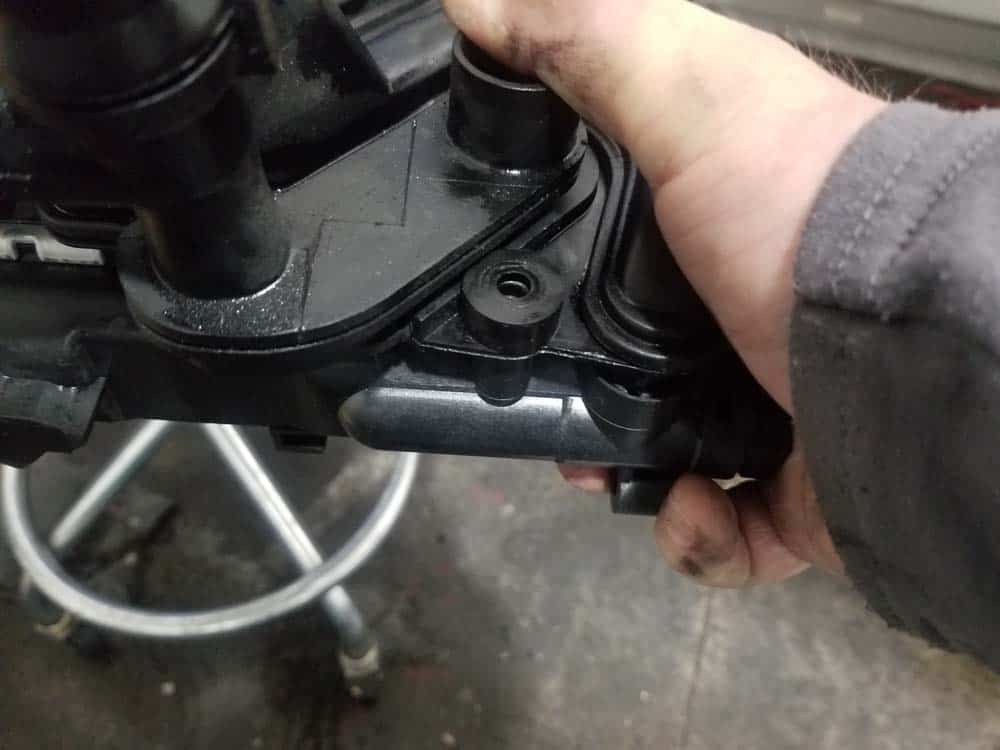
- Install the new radiator into the car. Reinstall the left and right T27 mounting screws to hold the radiator in place.
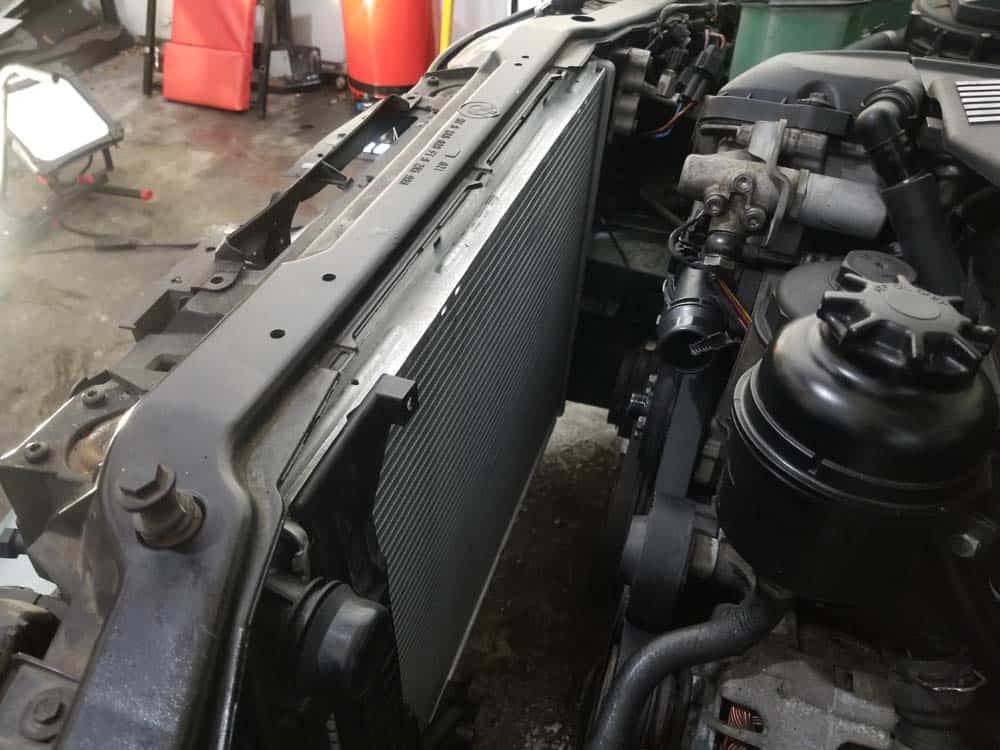
- Visually locate the two fittings on the expansion tank mounting plate that the tank connects to.
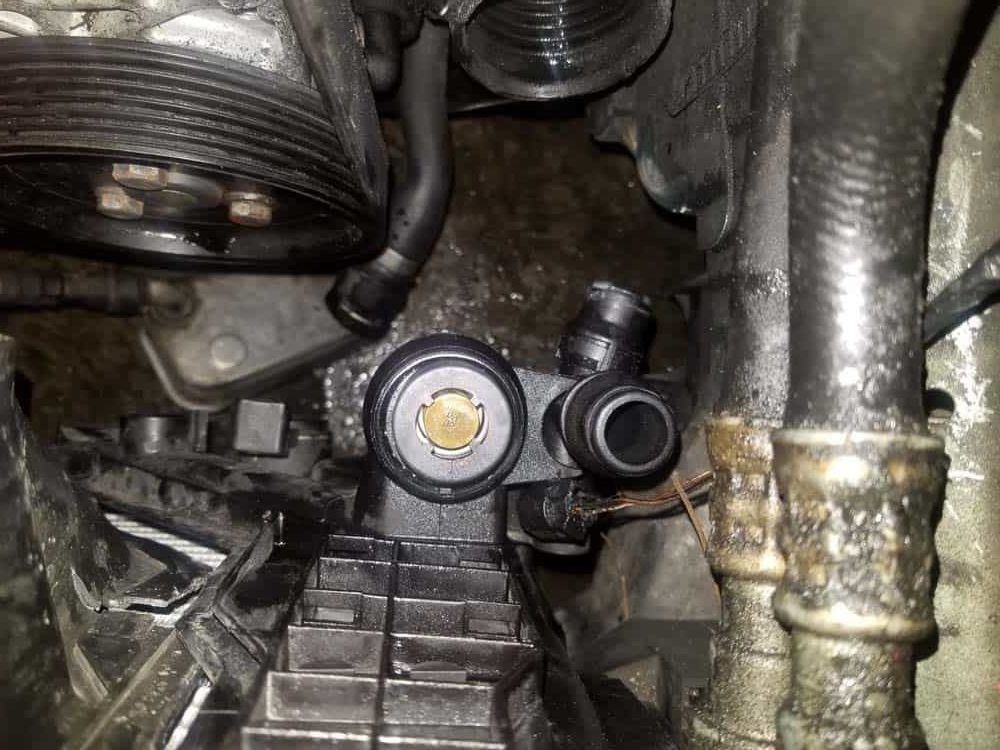
- Slowly lower the new expansion tank onto the mounting plate fittings. Note that the tab on the back of the tank should fit into the groove on the radiator.
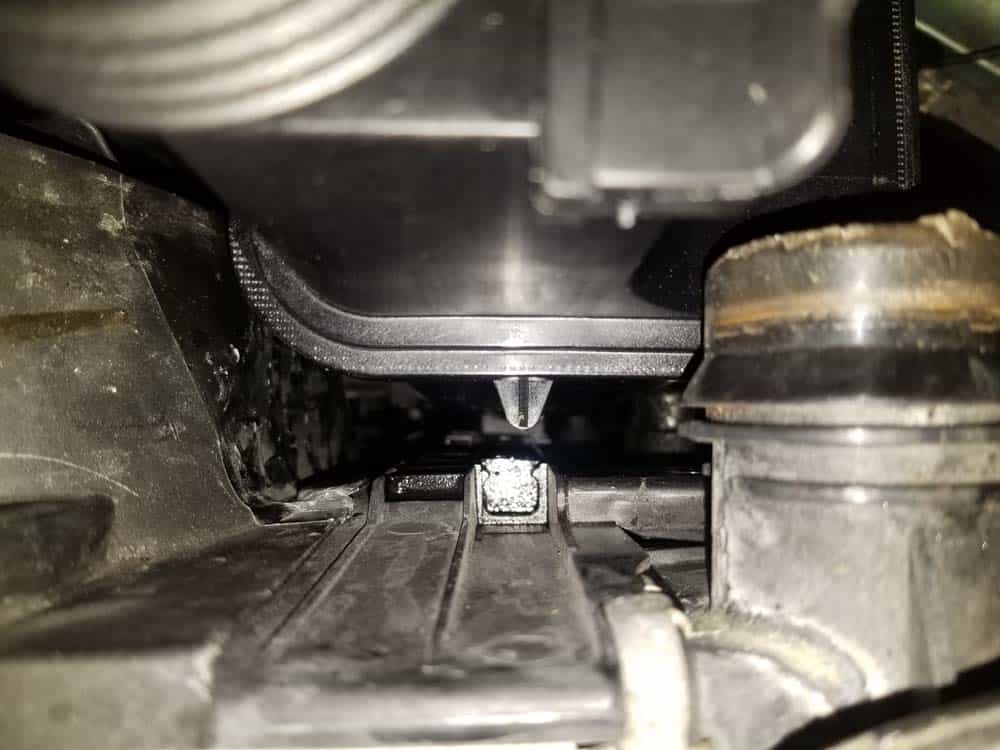
- When you are confident the tank is positioned correctly, use the palm of your hand to push the expansion tank firmly onto the expansion tank plate. Reach down the right side of the tank and push the locking clip in.
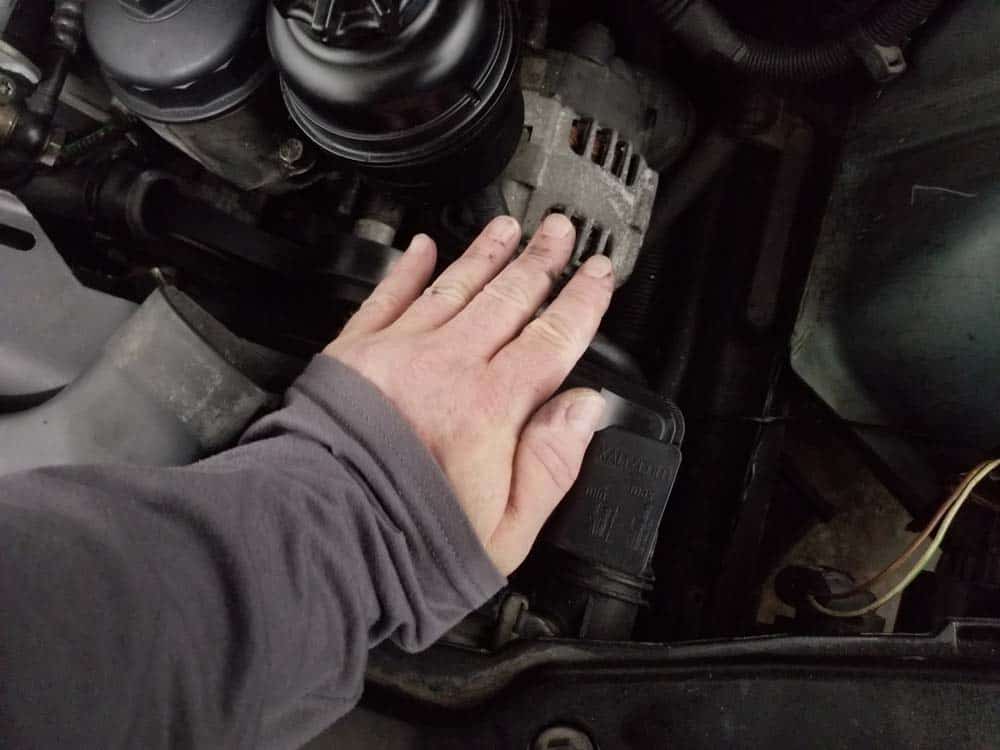
- Reinstall the lower coolant hose back onto the expansion tank. Always close the locking clamps BEFORE installing the coolant hoses on their fittings. You want to hear them “snap” into place when installed.
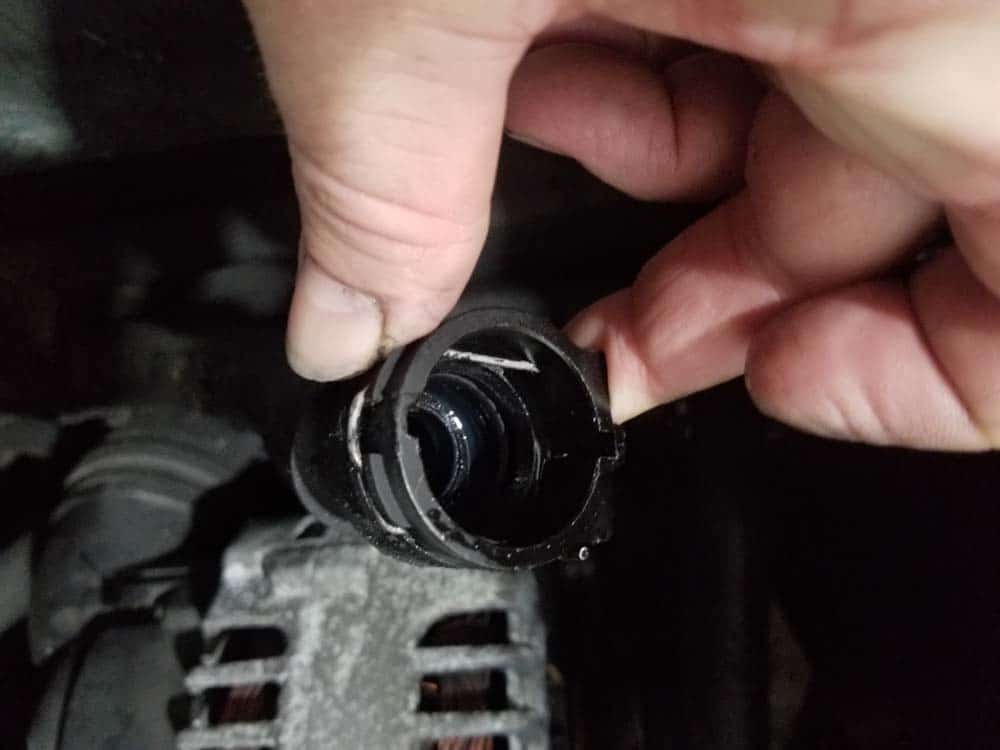
- If you had to remove your cooling fan from the clutch because of a seized nut, reinstall it using the three torx mounting bolts. Make sure you have the fan blades facing the correct direction. Torque the mounting bolts to 10 Nm (7.5 ft-lb).
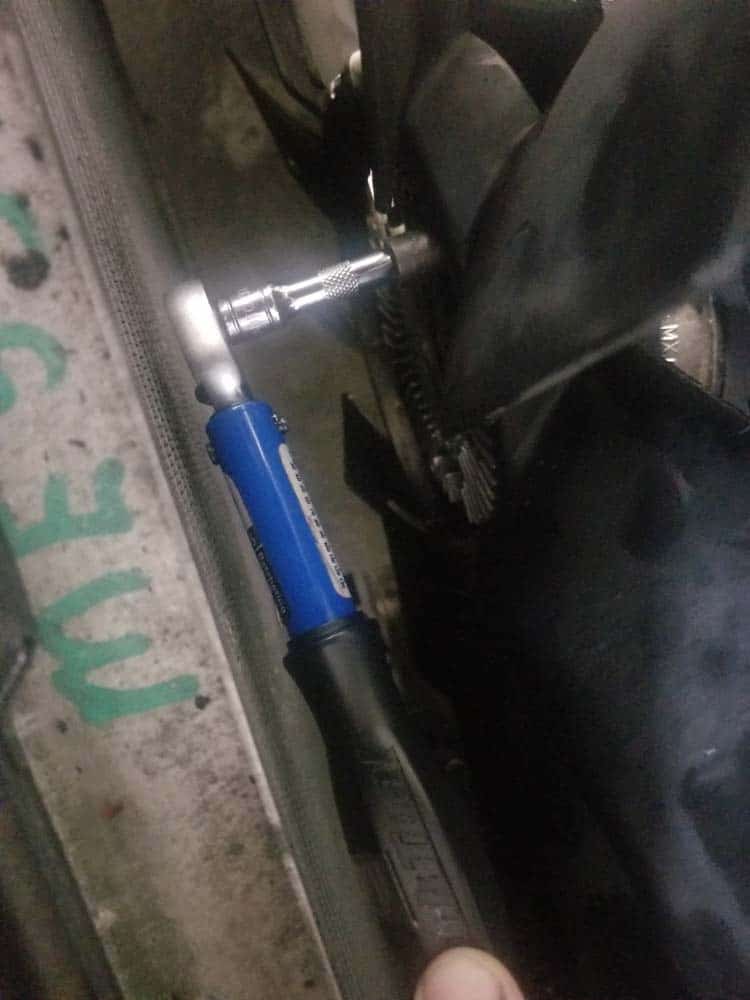
- If you were able to remove your cooling fan using the fan clutch tool, liberally apply some multipurpose automotive grease to the clutch nut threads. This will prevent it from seizing up in the future and make it easy to remove for future repairs.
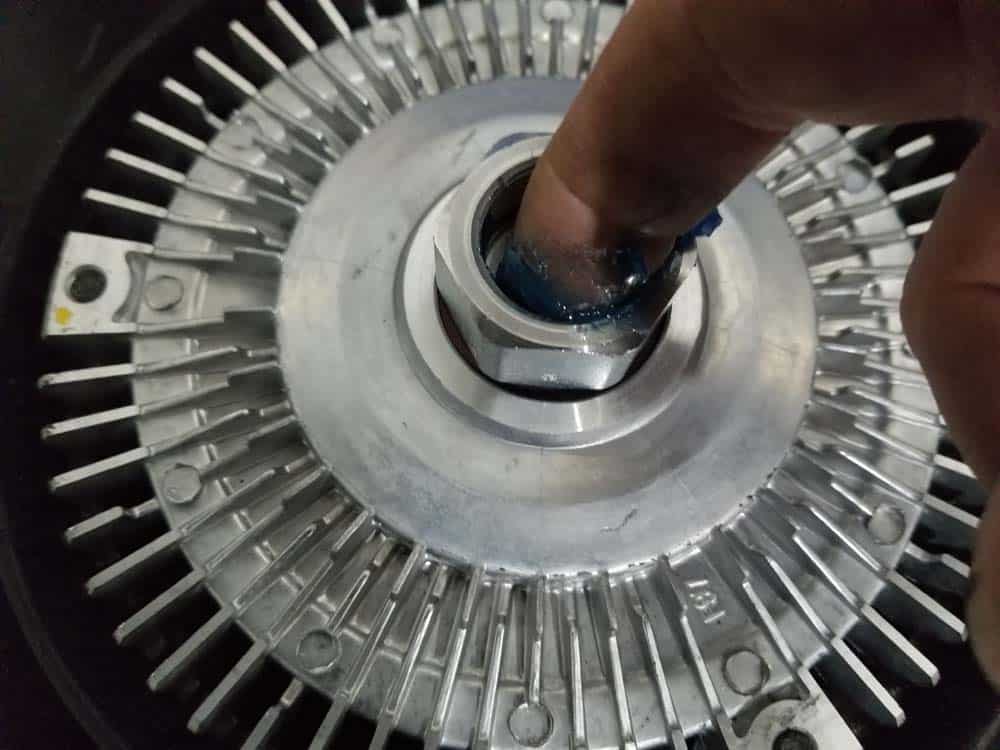
- Lower the fan shroud and the cooling fan together into the front of the vehicle. Spin the cooling fan onto the water pump counterclockwise to tighten. Use the special fan clutch tool to tighten the nut as snug as you can get it. Since it is a reverse thread, it is self tightening so you do not have to worry about torquing it.
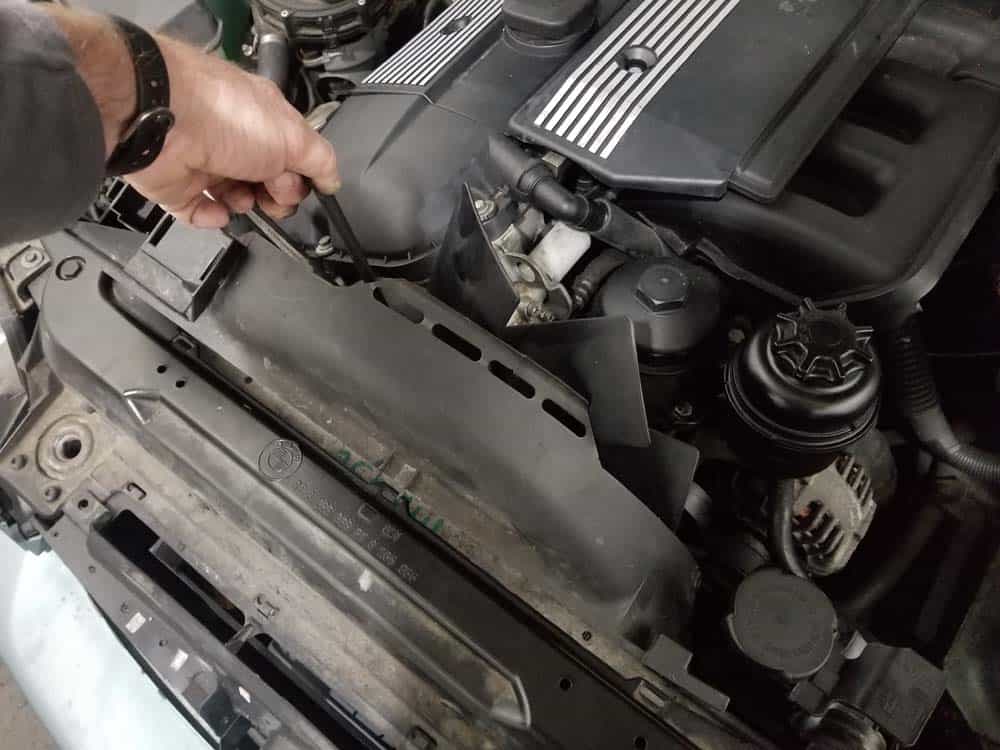
- Remove the right radiator mounting screw (it was installed earlier to hold the radiator in position). Move the fan shroud into its correct position then reinstall the screw so it anchors the shroud and the radiator to the frame. Reinstall the plastic shroud rivet.
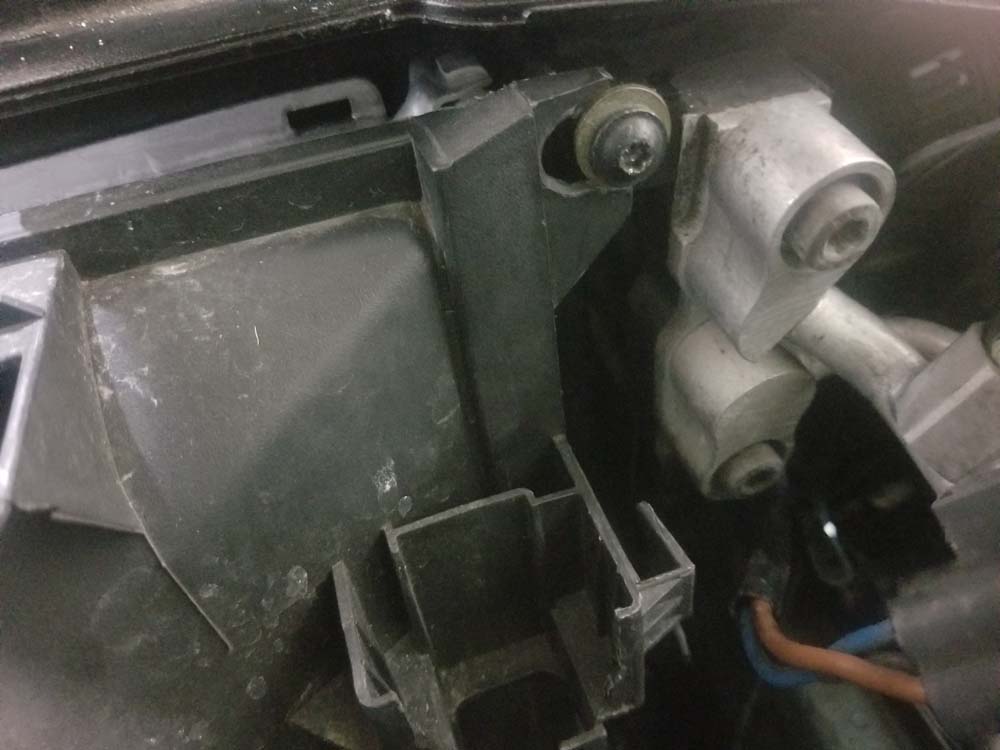
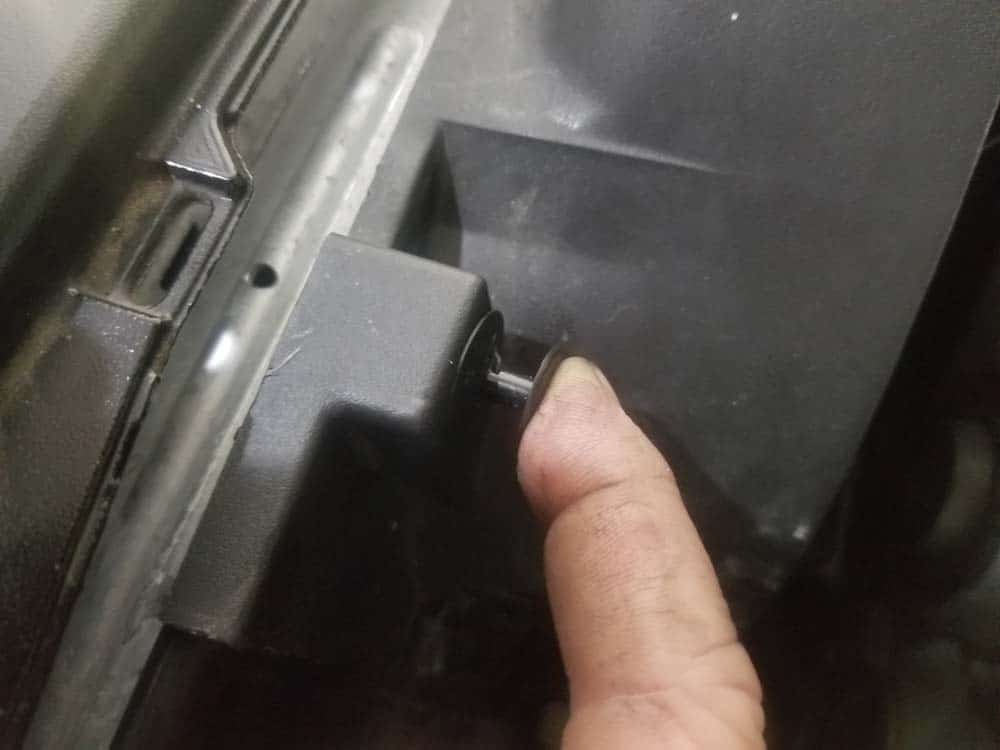
- Reinstall the upper radiator hose that runs from the thermostat to the expansion tank. Use the palm of your hand to put pressure on the hose so it properly clicks into place on the expansion tank. If the hose is being obstinate and won't click onto the fittings, use some liquid dish detergent to lubricate the connection. Once again...always close the metal clamp before installing a coolant hose on its fitting(s). We cannot stress this enough. It is very important to hear the "click" when reinstalling coolant hoses.
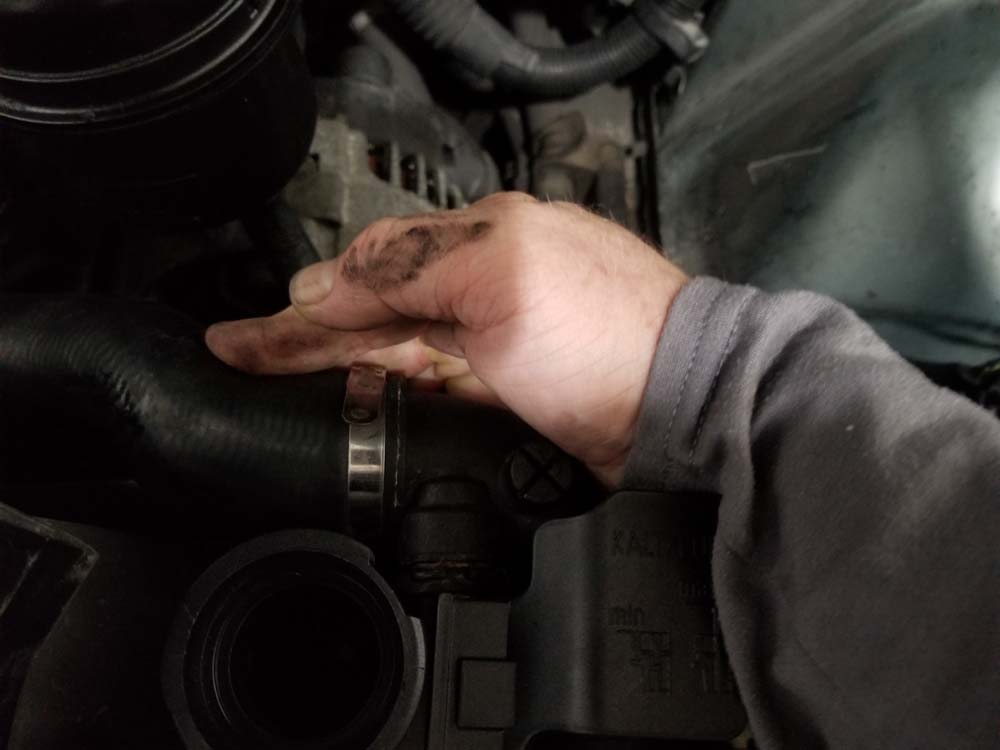
- Move under the vehicle and reconnect lower left radiator coolant hose. The lower left hose can often be more difficult to install than it was to remove. If you can't get it to snap on its fitting, try applying a little liquid dish detergent to the o-ring to help it slide onto the fitting. NEVER USE a petroleum based lubricant like grease or oil to lubricate the o-ring.
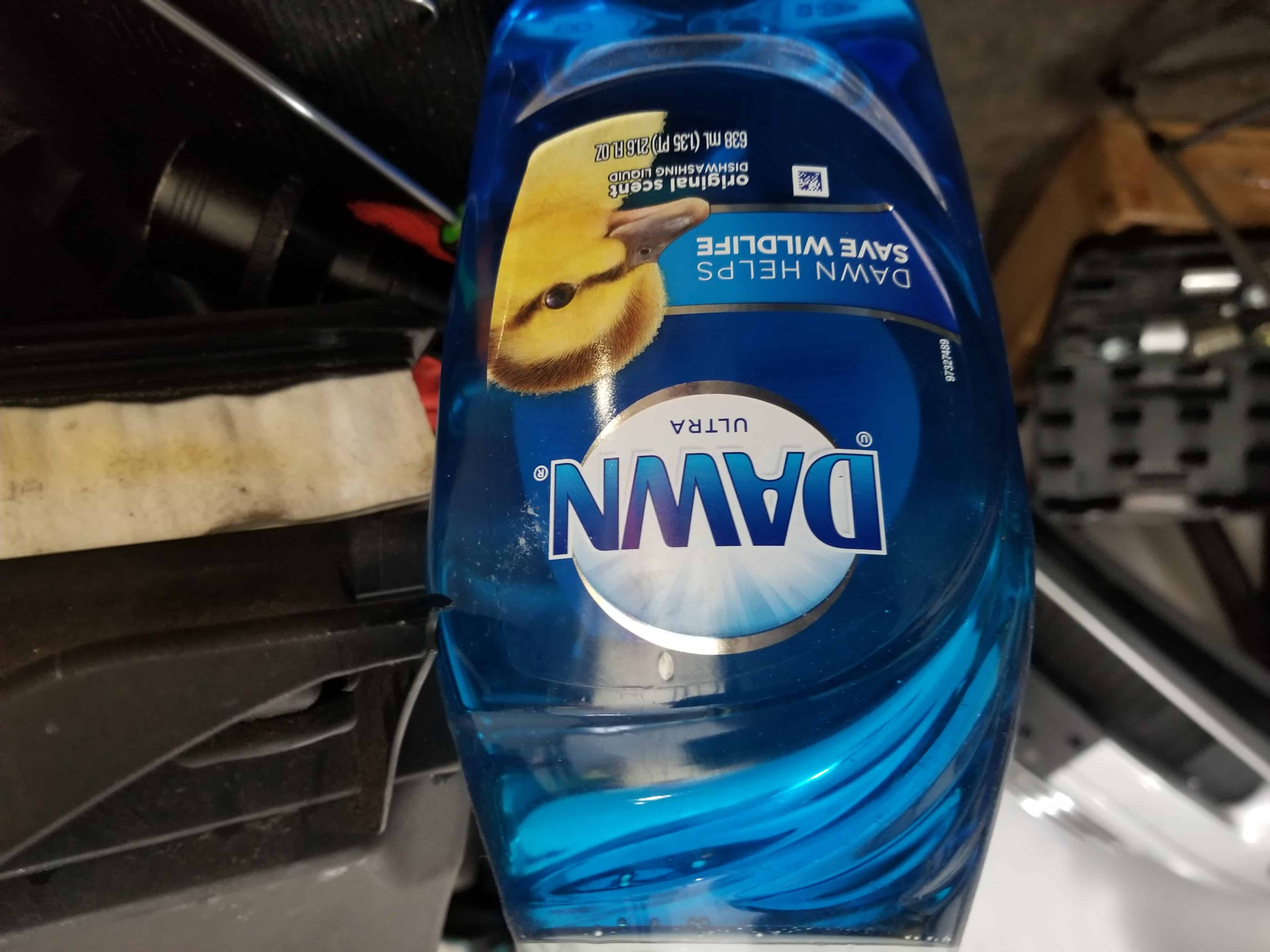
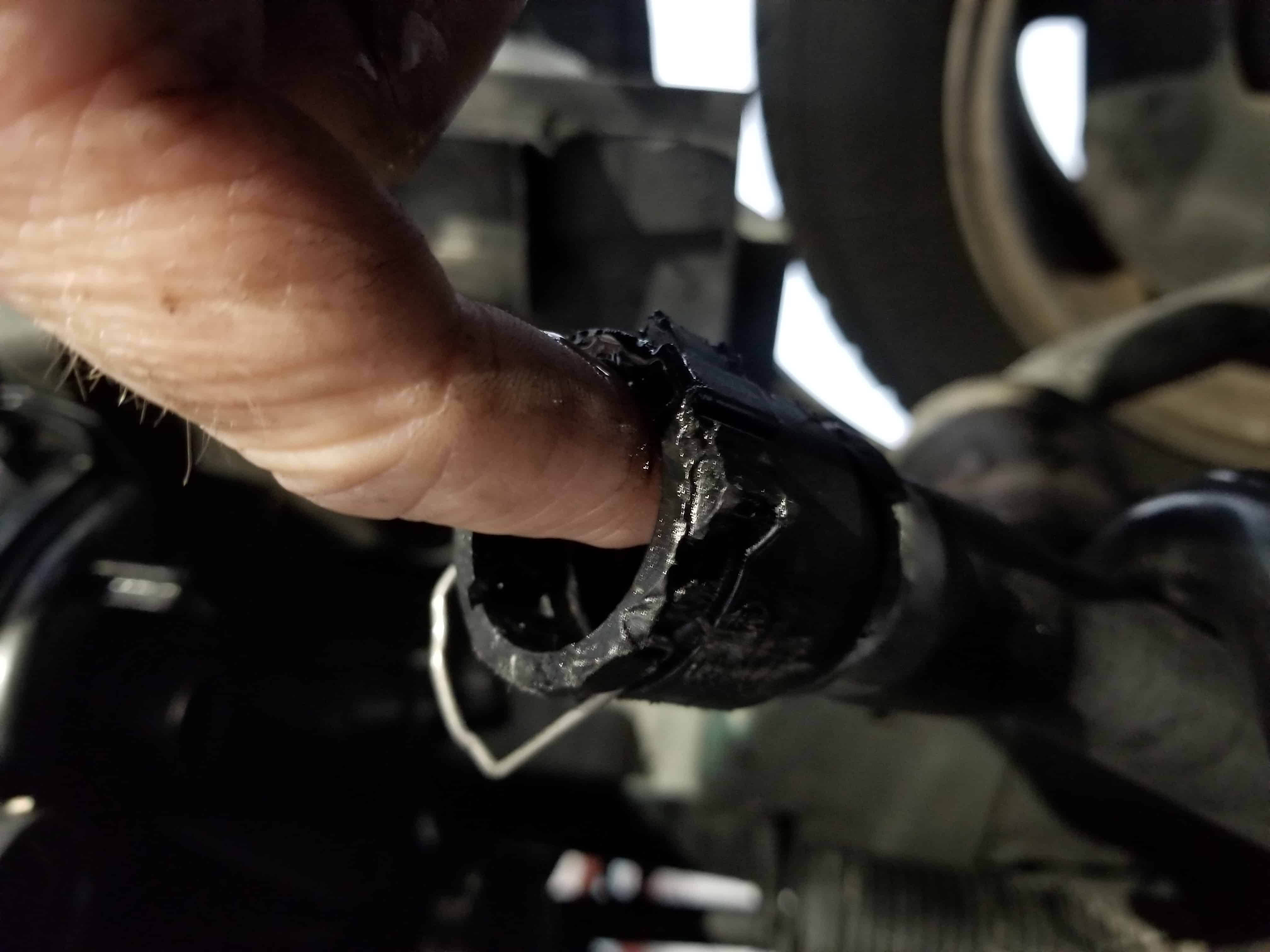
- Inspect the transmission cooler - make sure the two o-rings are intact on the inlet ports. Reinstall the transmission cooler. Use the palm of your hand to apply pressure to make sure the cooler o-rings seat properly in the radiator. Close the metal clamp by lowering the plastic pull.
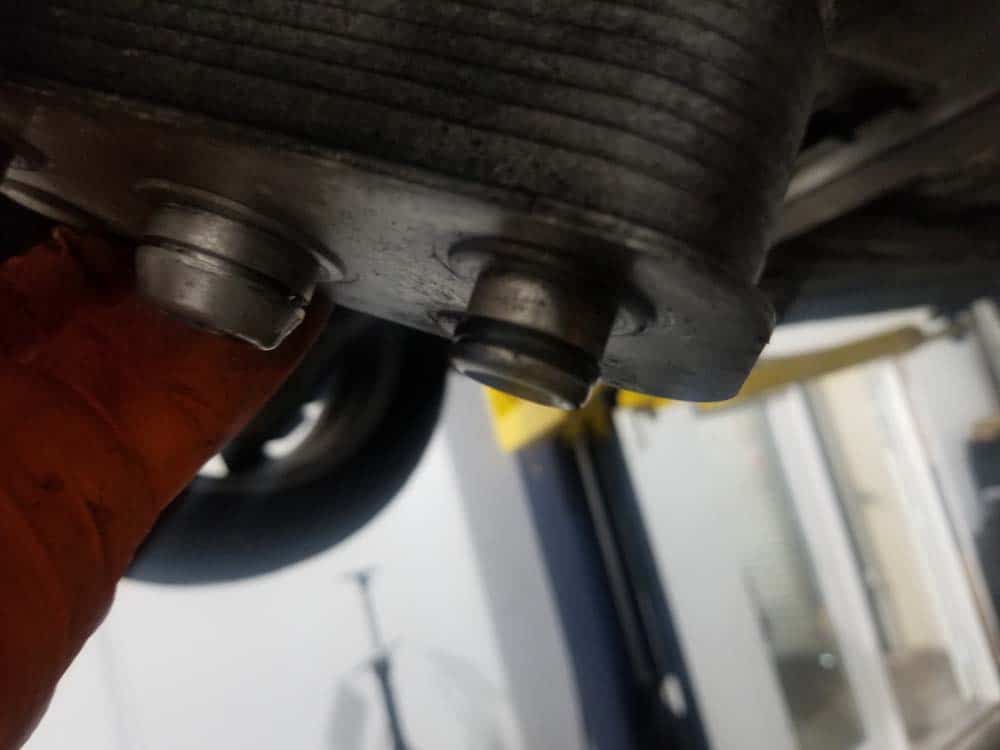
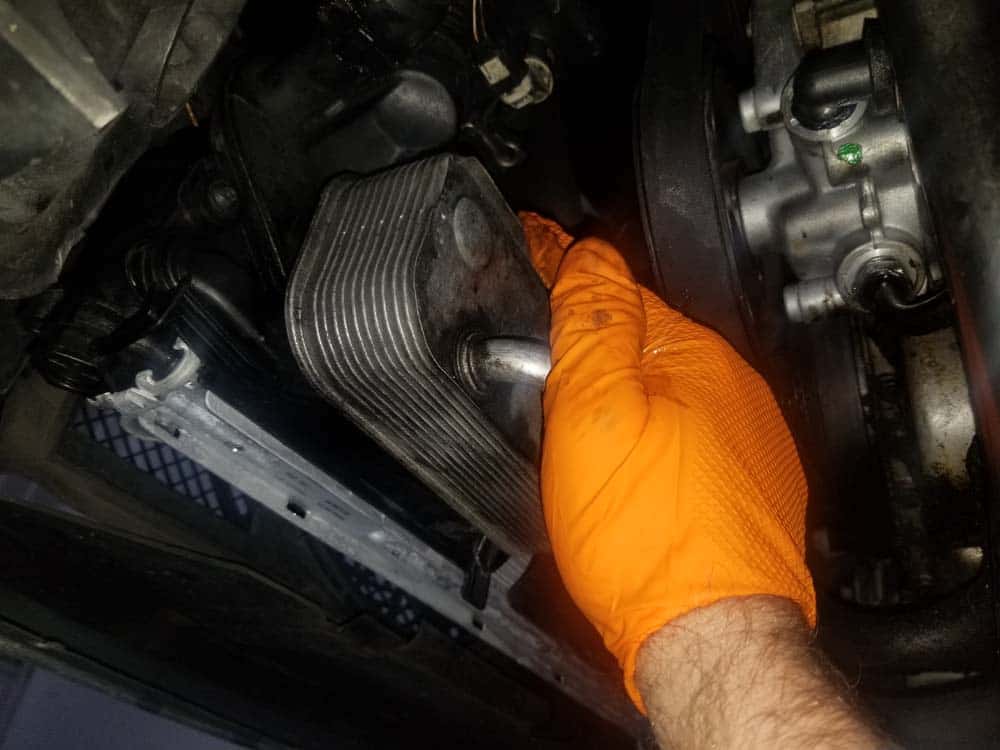
- Reinstall the lower right radiator hose. Once again, this hose can be as difficult to install as it was to remove. Use dish detergent to lubricate the o-ring so it slides on.
- Double and triple check all of the hose connections to make sure you didn't over look anything. Also check to make sure the drain plug is snugly installed. If everything looks secure, proceed to the next section.
- Reinstall the air quality sensor and the wiring harness connector into the fan shroud.
- Reinstall the intake tube, intake muffler and reconnect the MAF sensor.
Section 5 - Refilling the BMW E46 Radiator with Coolant, Bleeding and Testing
Refilling and bleeding the coolant system in your BMW E46 3 series car is a very simple procedure. The goal is to remove any air bubbles trapped in the coolant line that could potentially cause the engine to overheat. Unlike many other repair articles, the BMW Repair Guide uses the "double bleed" approach on their BMW E46 3 series cars. This is a proven method that we have used for years with 100% success. The double bleed method entails purging the air out of the coolant system twice; once with the engine off, and then again with the engine running. We have found this to be the most complete method of removing all of the air out of the E46 cooling system.- Only use Genuine BMW Antifreeze/Coolant mixed 50/50 with distilled water in your vehicle. Using any other brand of antifreeze/coolant in your BMW is strongly discouraged. Genuine BMW Antifreeze/Coolant was specifically engineered for your BMW...other brands may not cool your engine correctly.
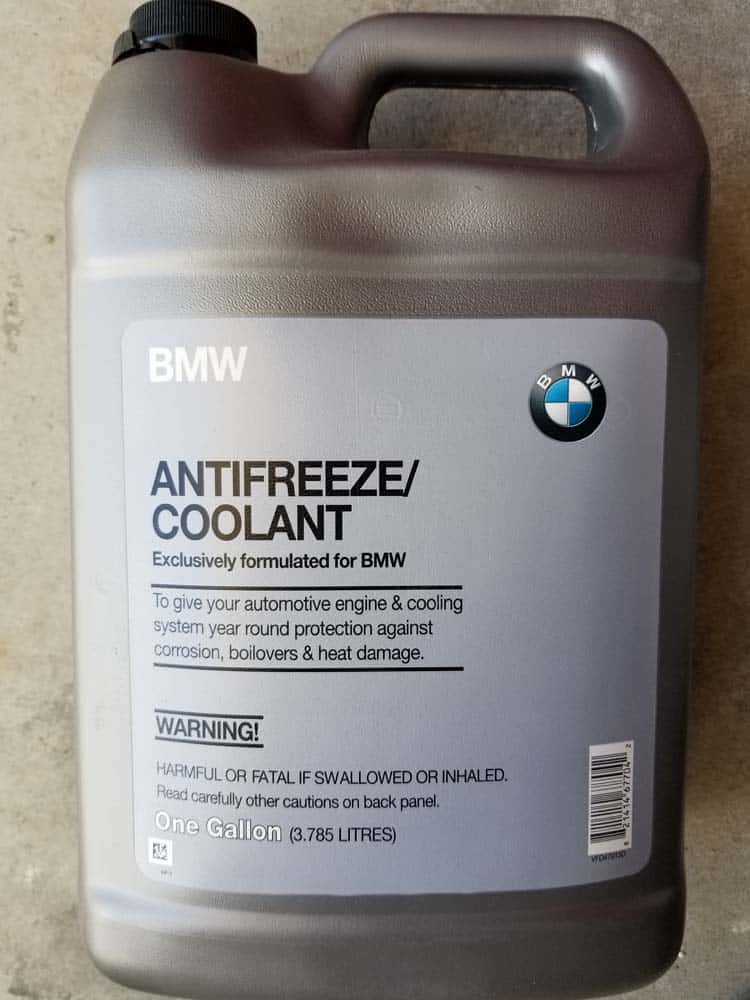
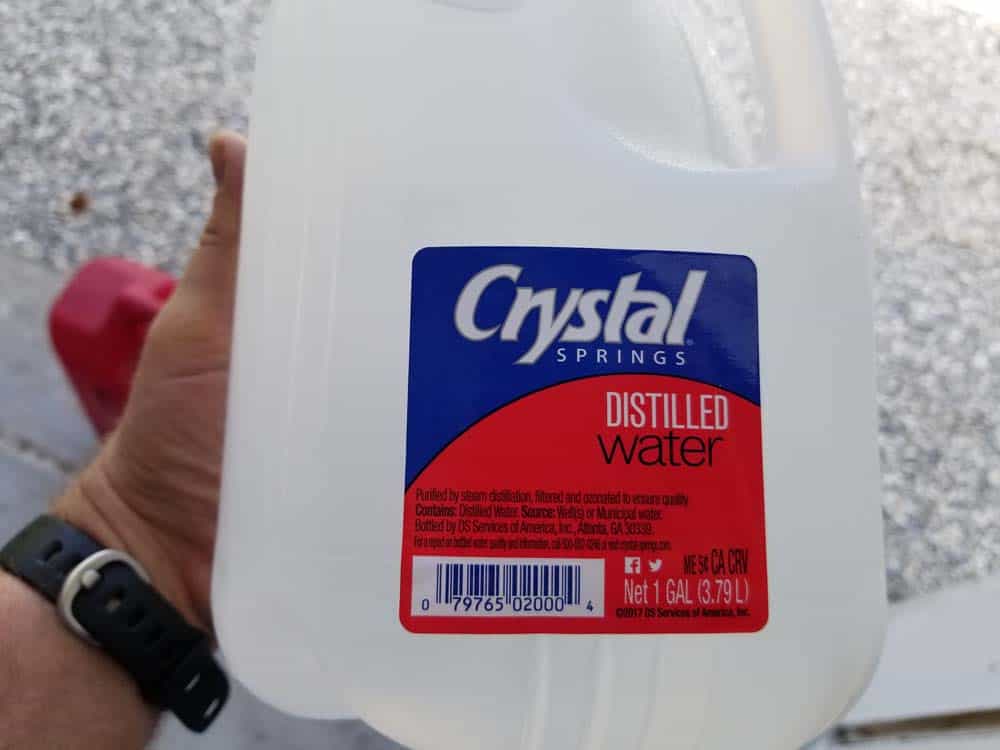
- Loosen the bleed screw on the upper coolant hose.
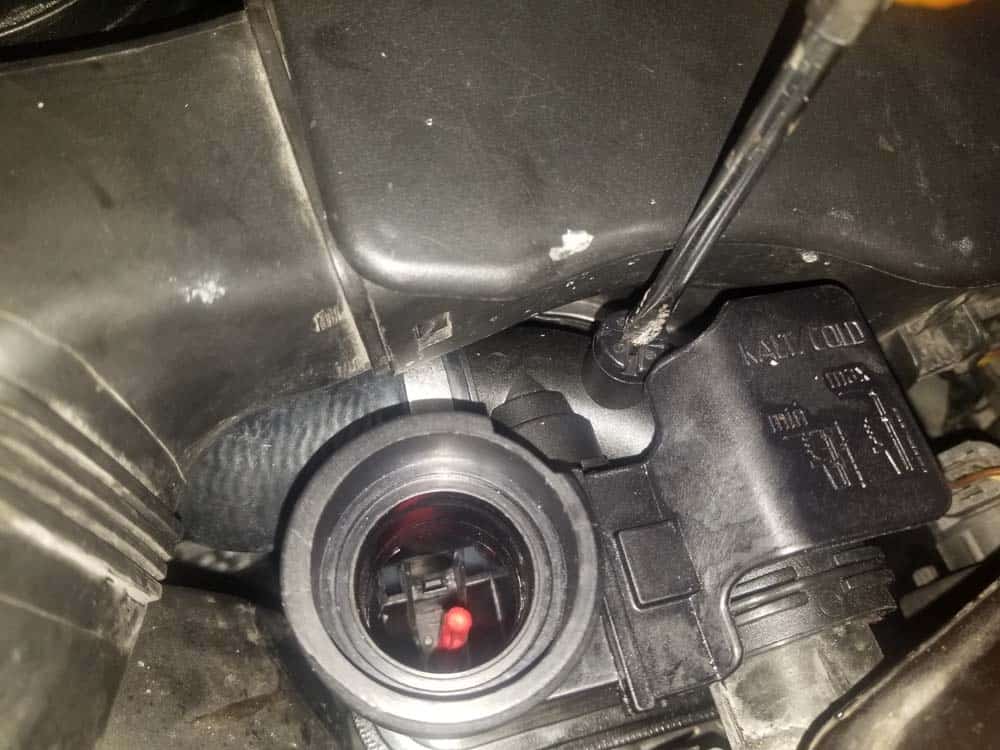
- Turn the ignition on. Do not start the vehicle.
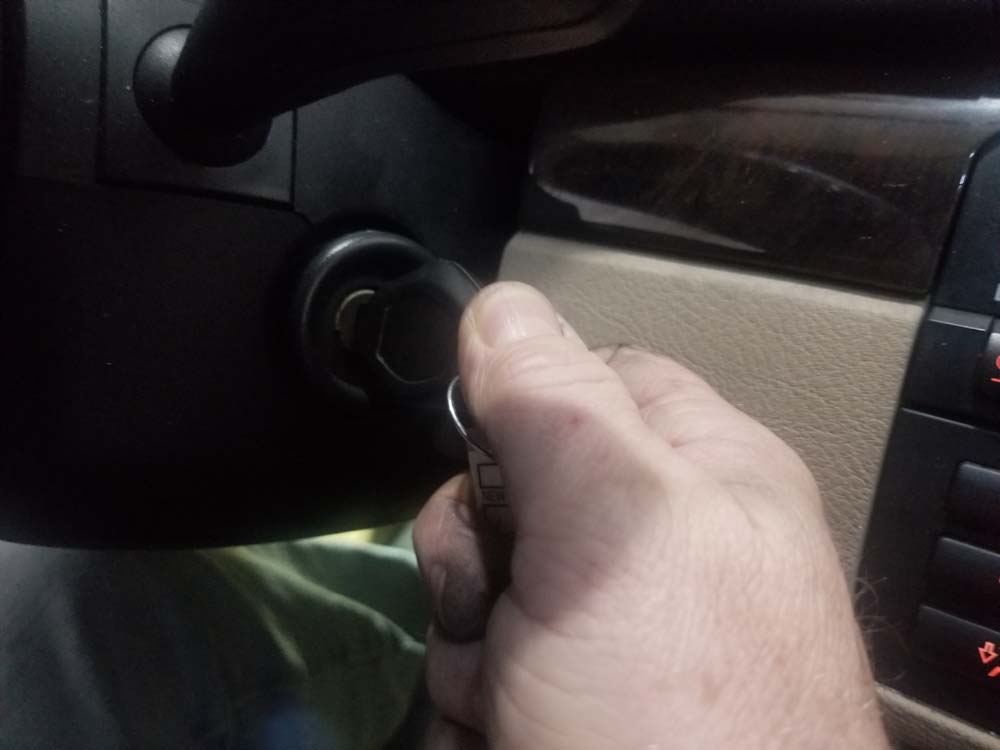
- Set the HVAC temperature controls to full warm and the fan speed to its lowest setting (this opens the heater core and activates the secondary electric coolant pump).
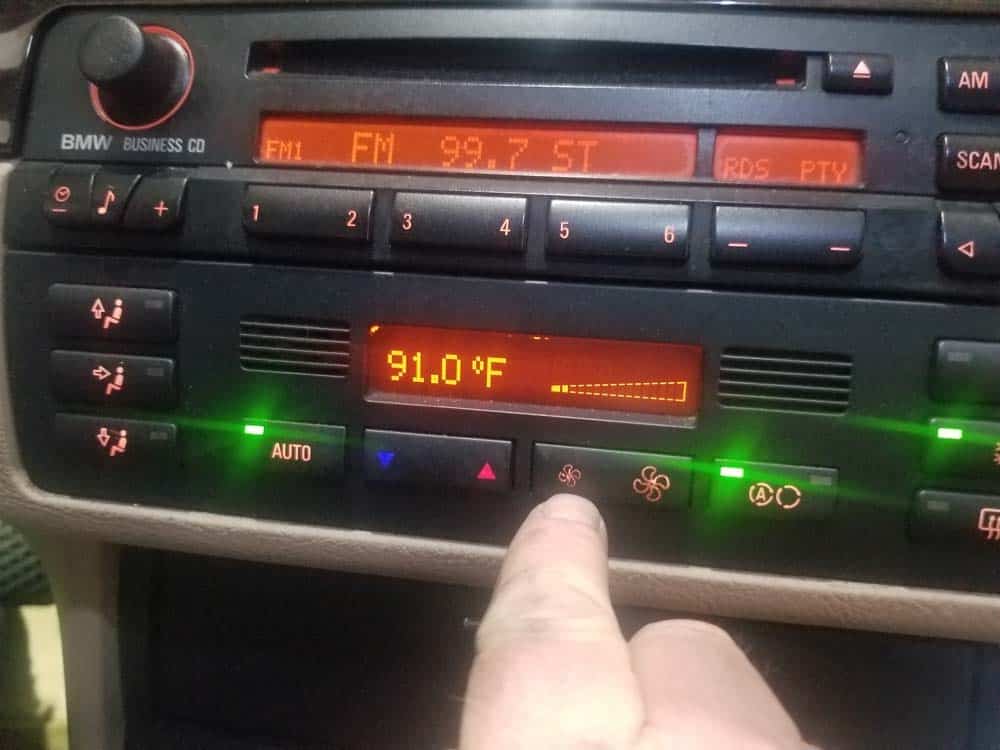
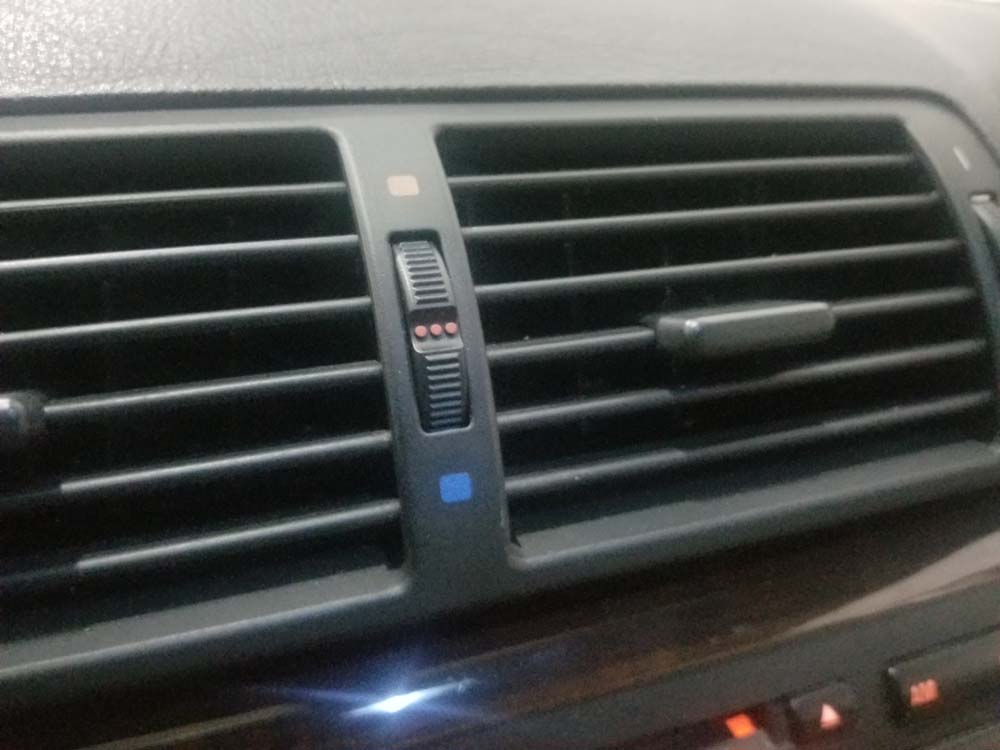
- Slowly fill the expansion tank with coolant until it starts to spill from the bleeder screw.
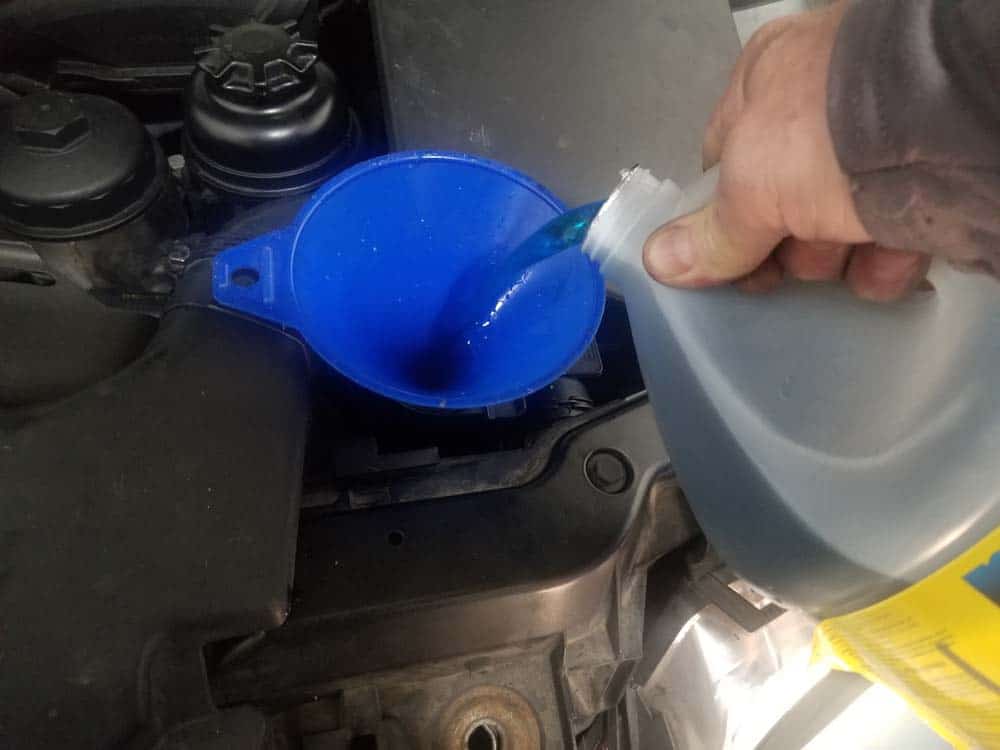
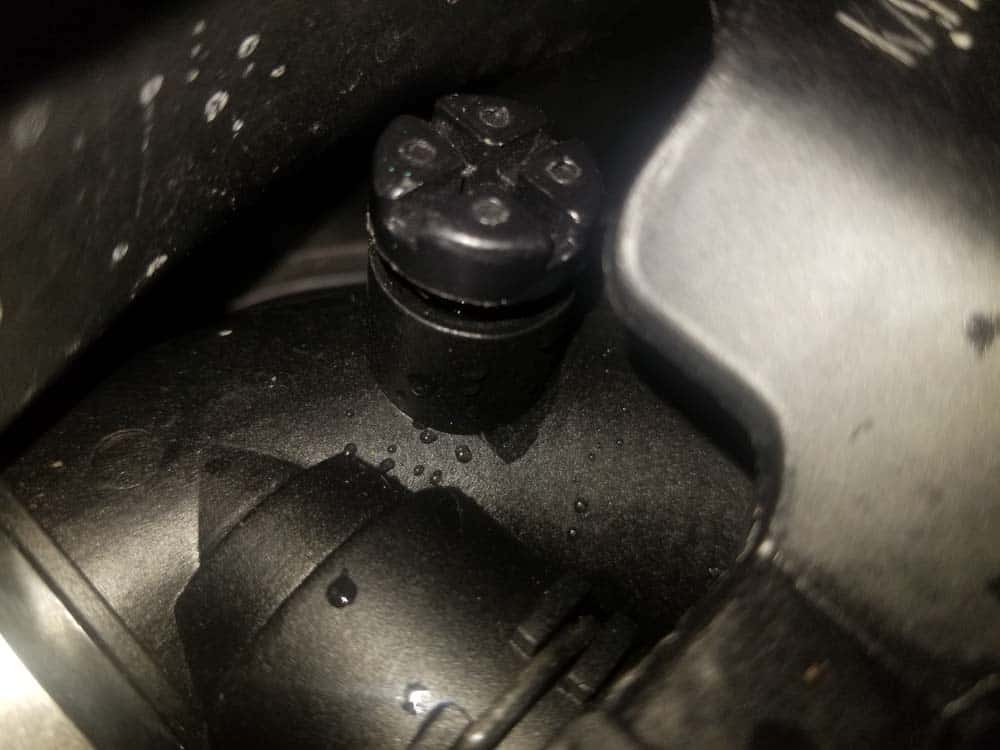
- When the coolant spilling from the bleed screw is free of air bubbles (just a steady stream of coolant), tighten the screw and replace the expansion tank cap.
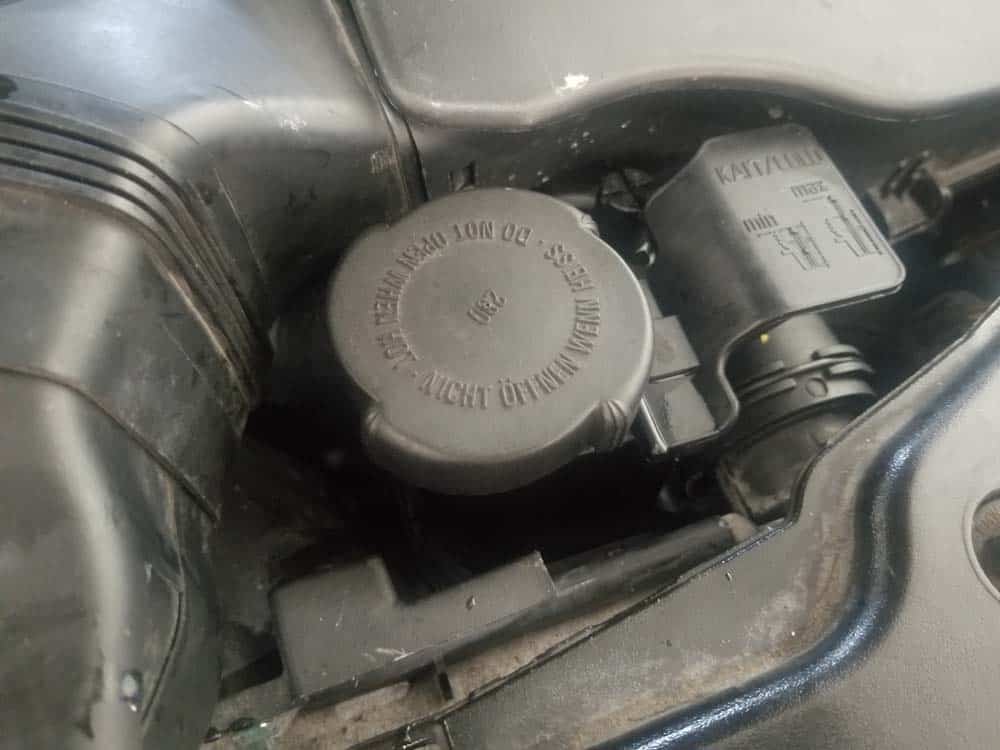
- Start the engine.
- With the engine running, loosen the bleeder screw again. You should get more air bubbles coming out until there is a steady stream of coolant being pushed out of the bleeder hole. Tighten the bleeder screw.
- Allow engine to reach operating temperature (about 5 minutes if cold). Keep an eye on the engine temperature gauge...the needle should stay right in the middle. Check all of the hoses for leaks.
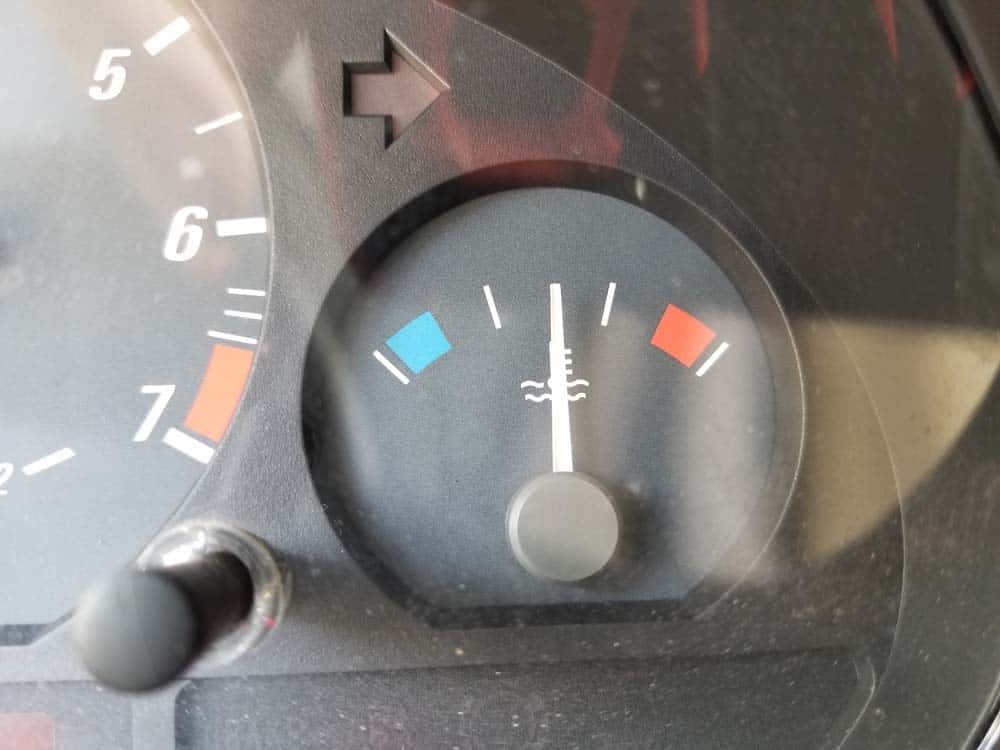
- Allow the engine to cool down. Recheck the coolant level in the expansion tank and top off if necessary.
BMW E46 Radiator Replacement Finished

